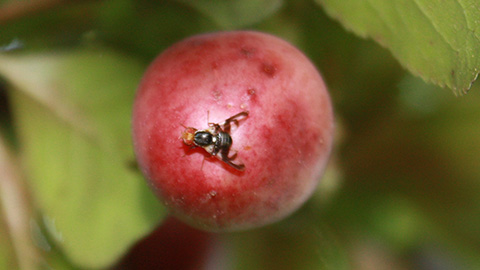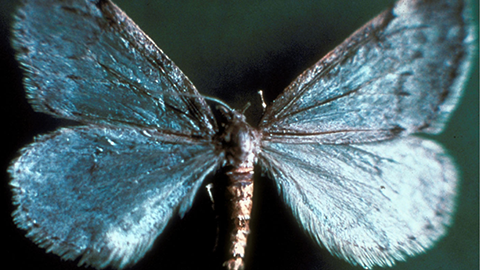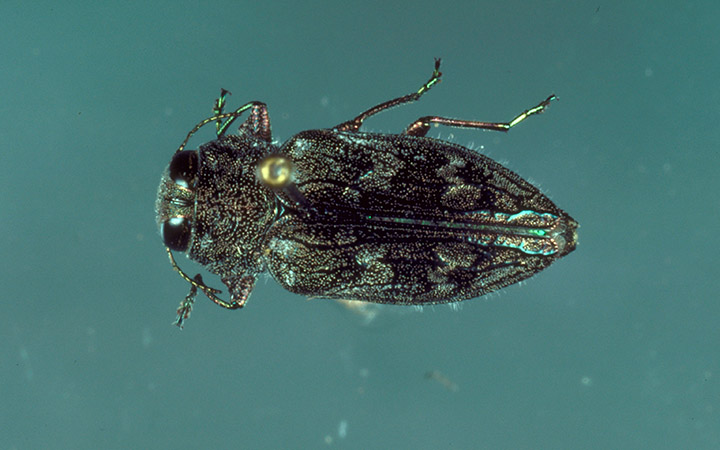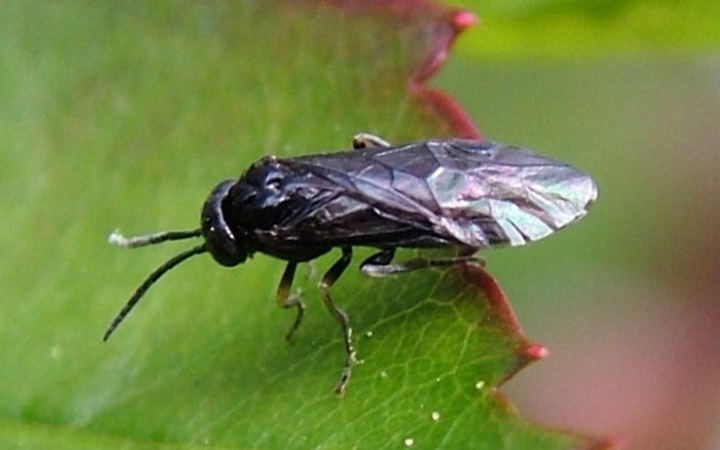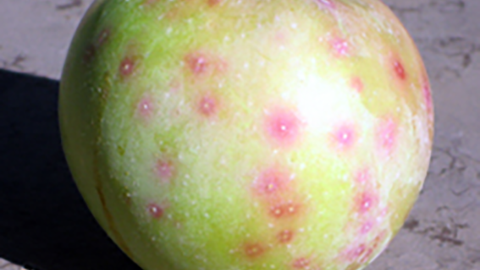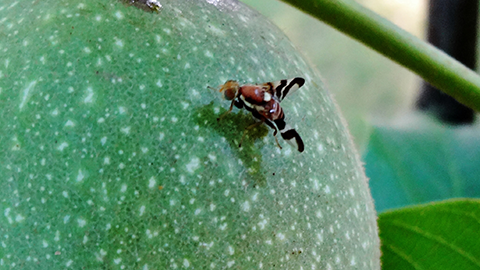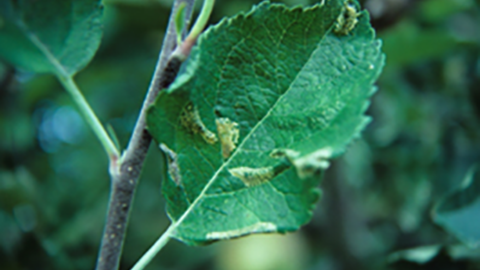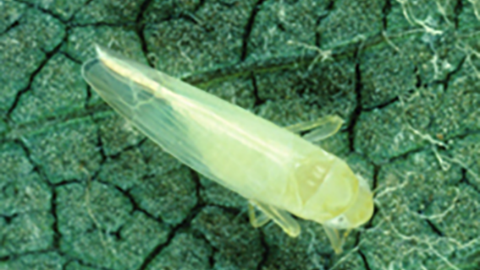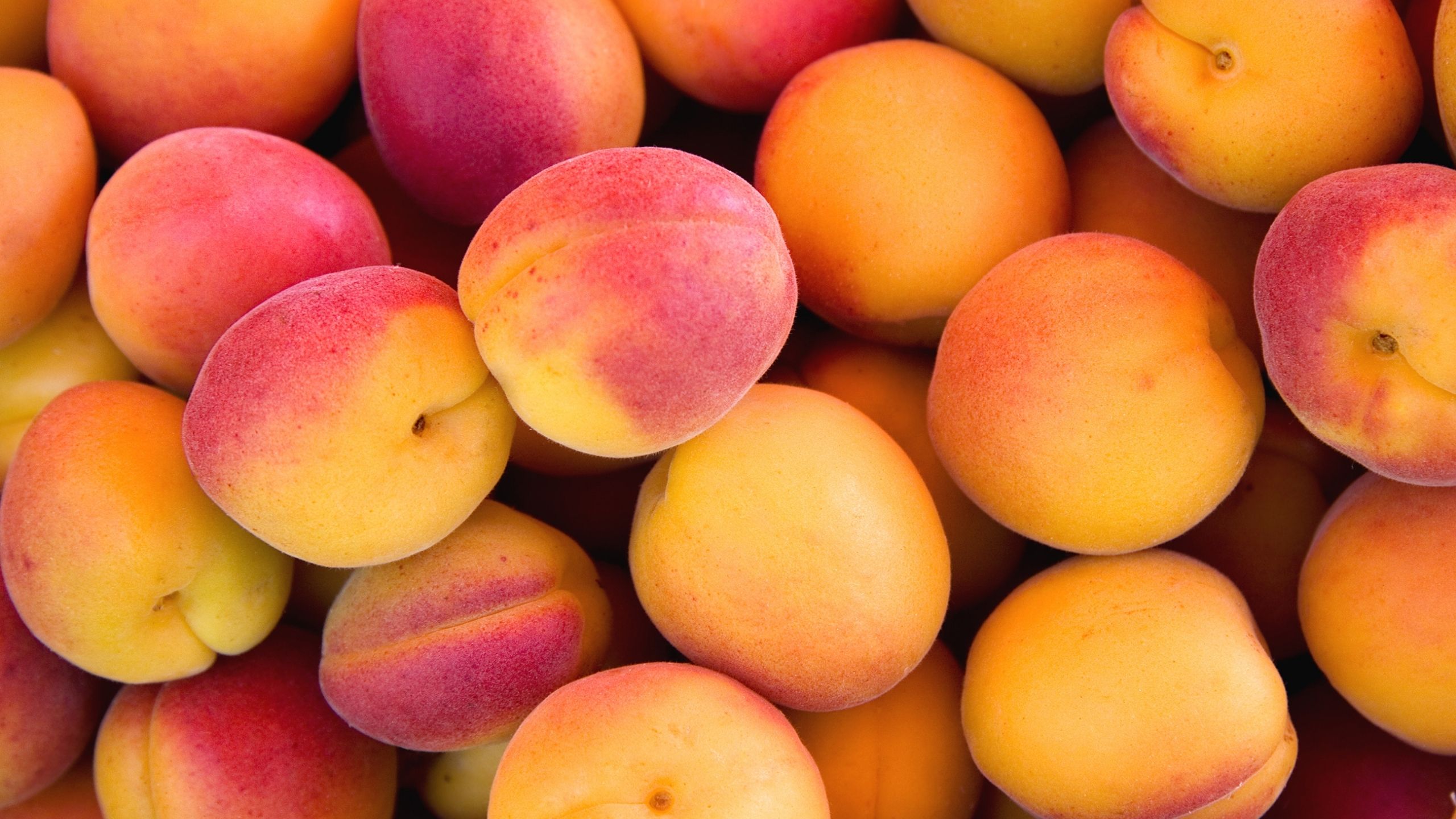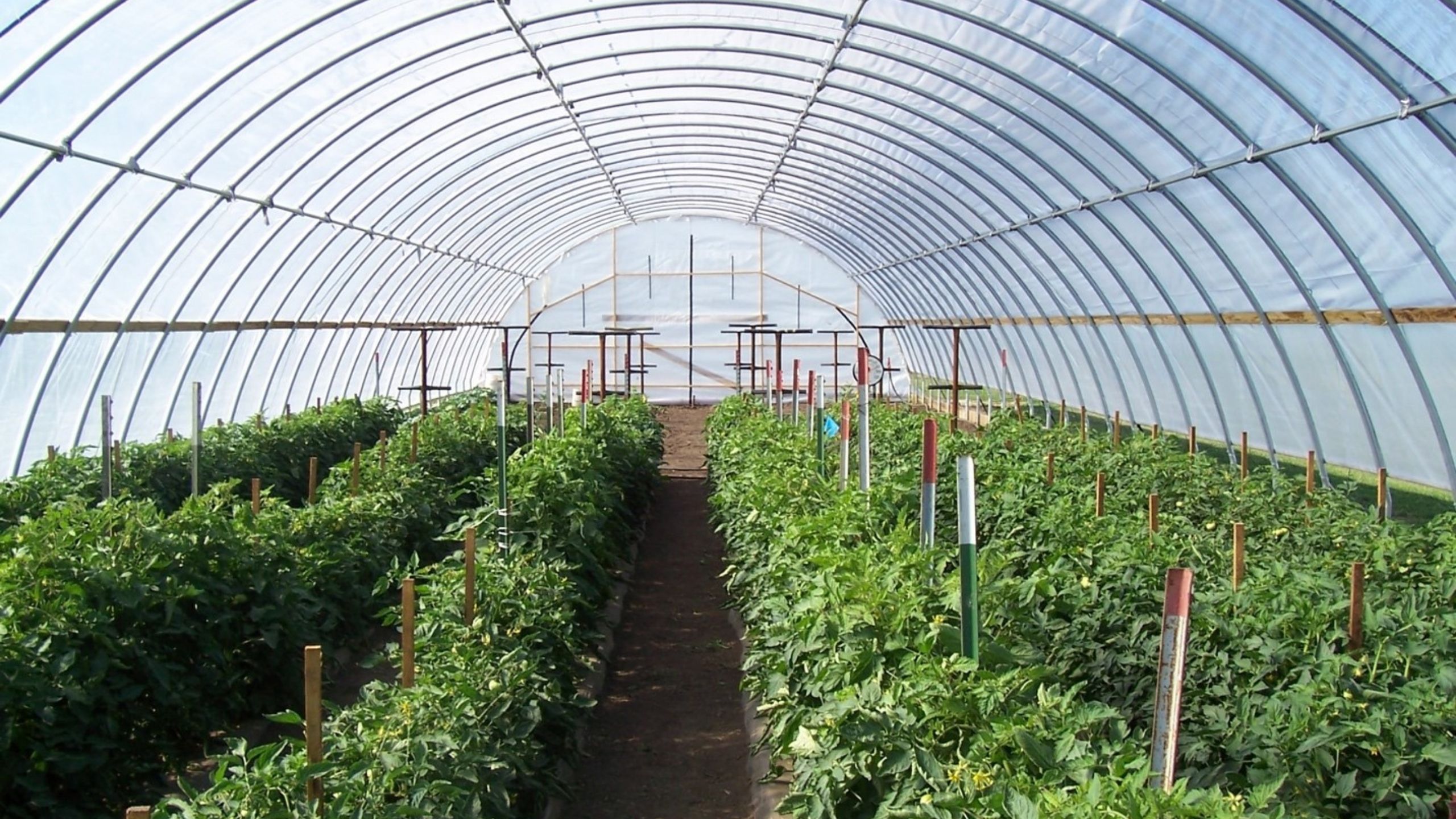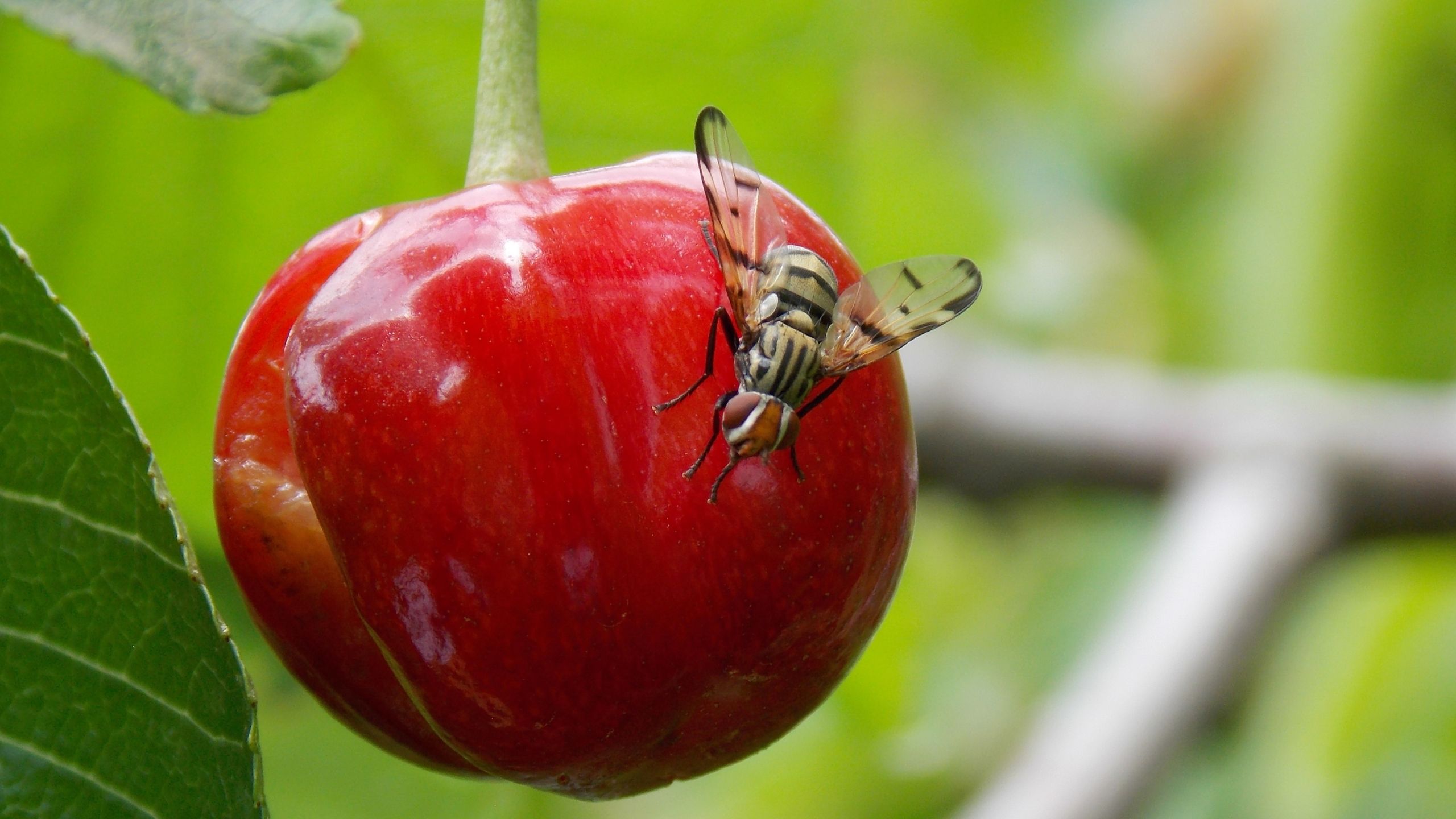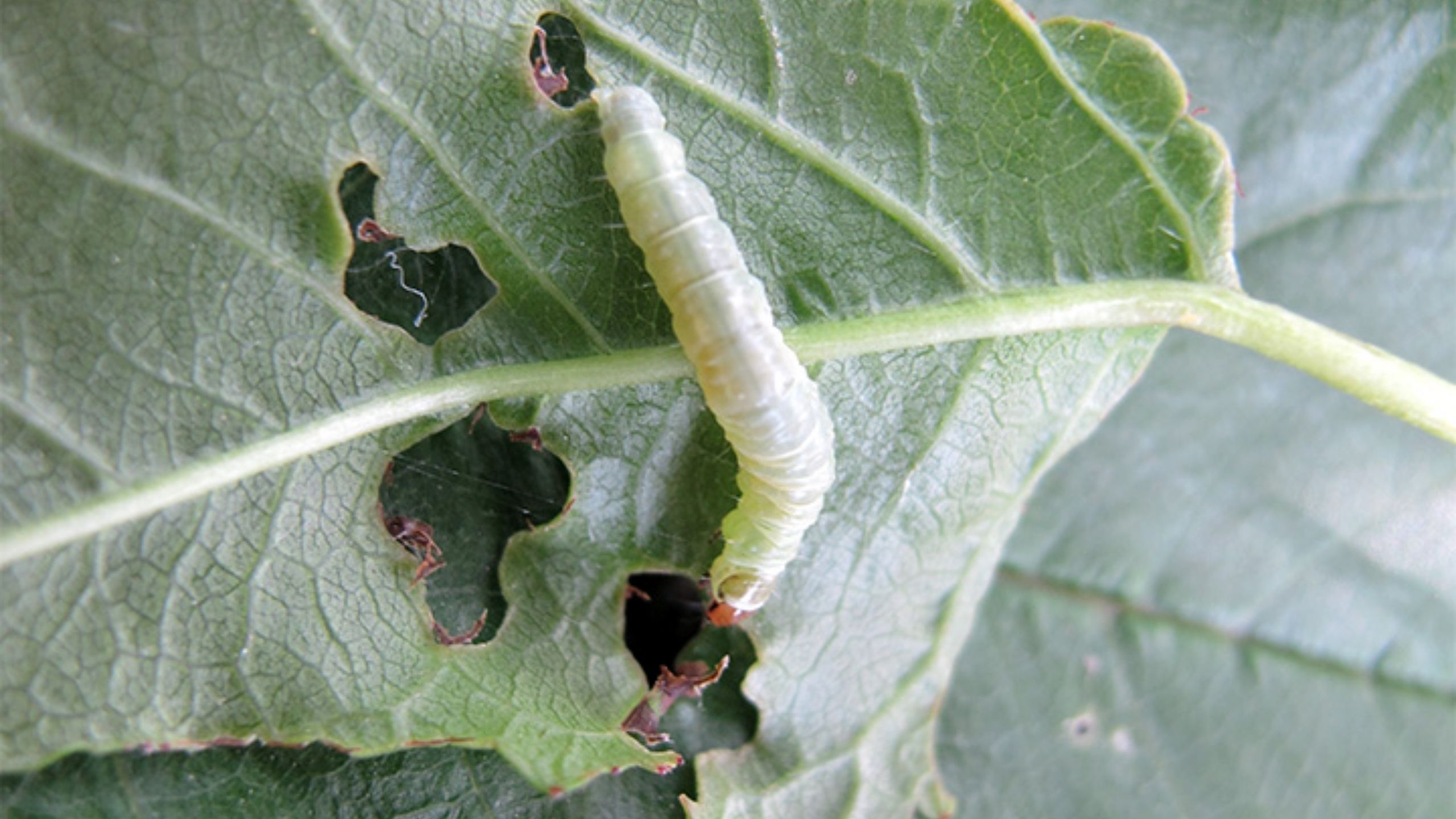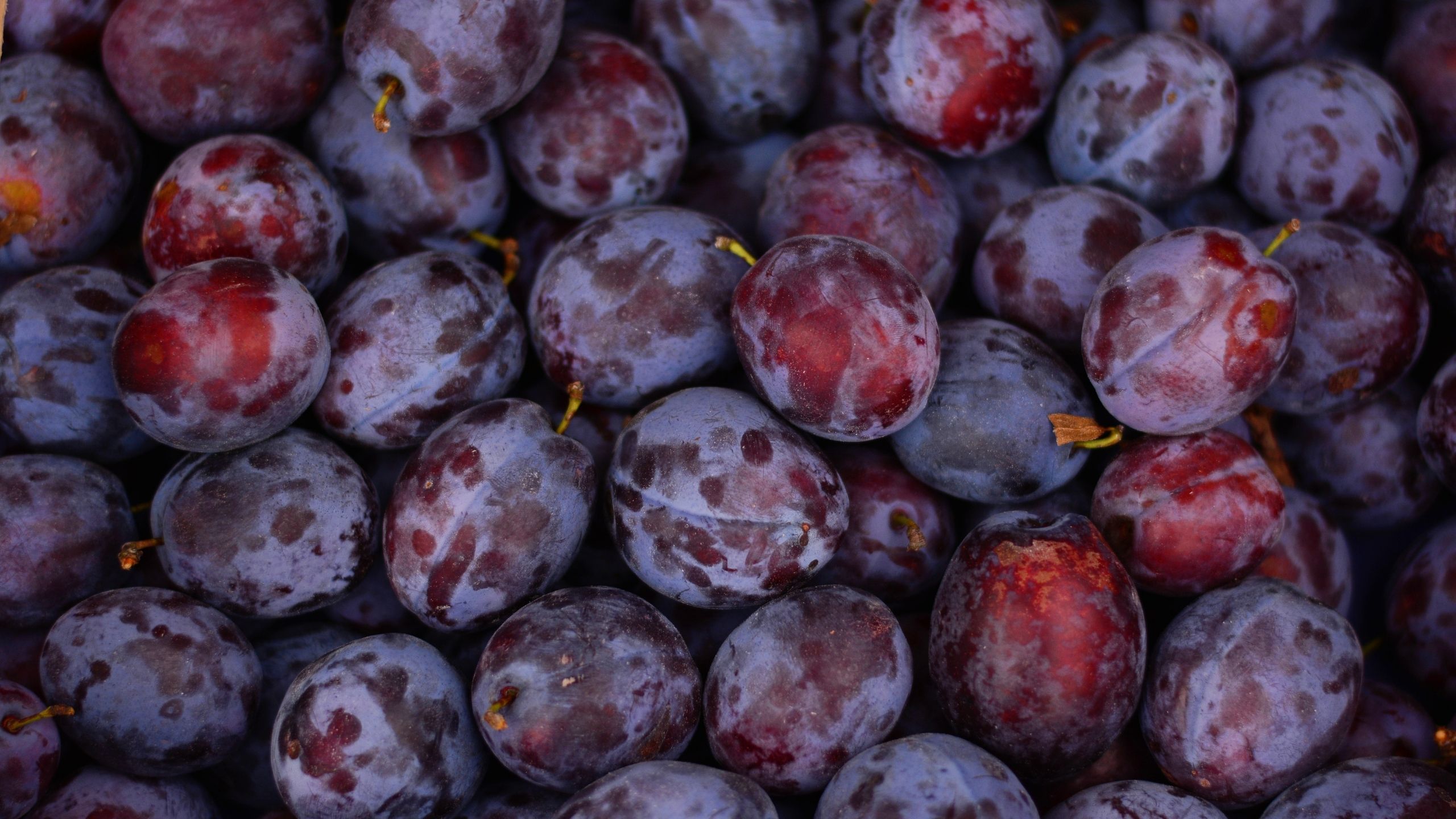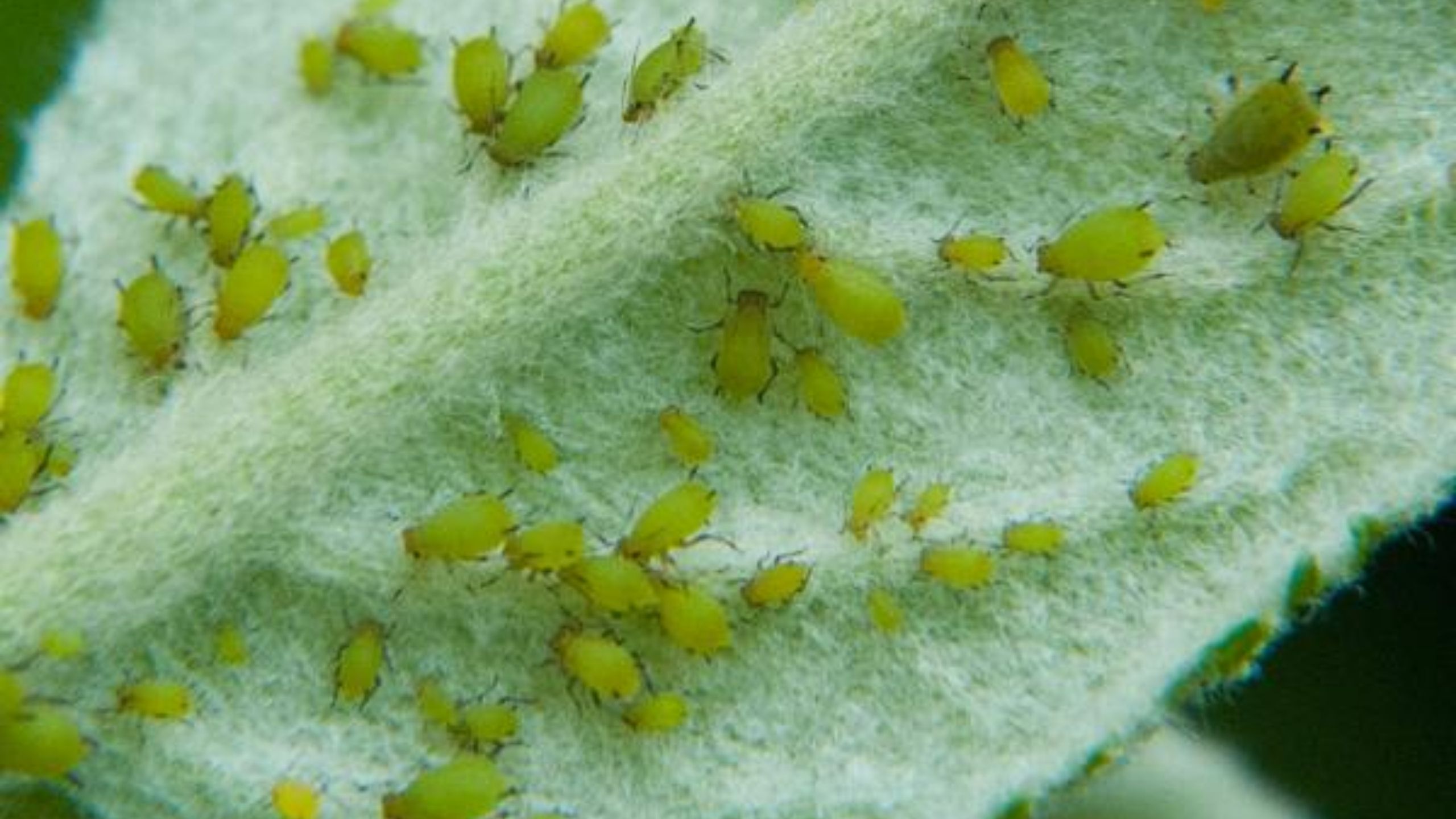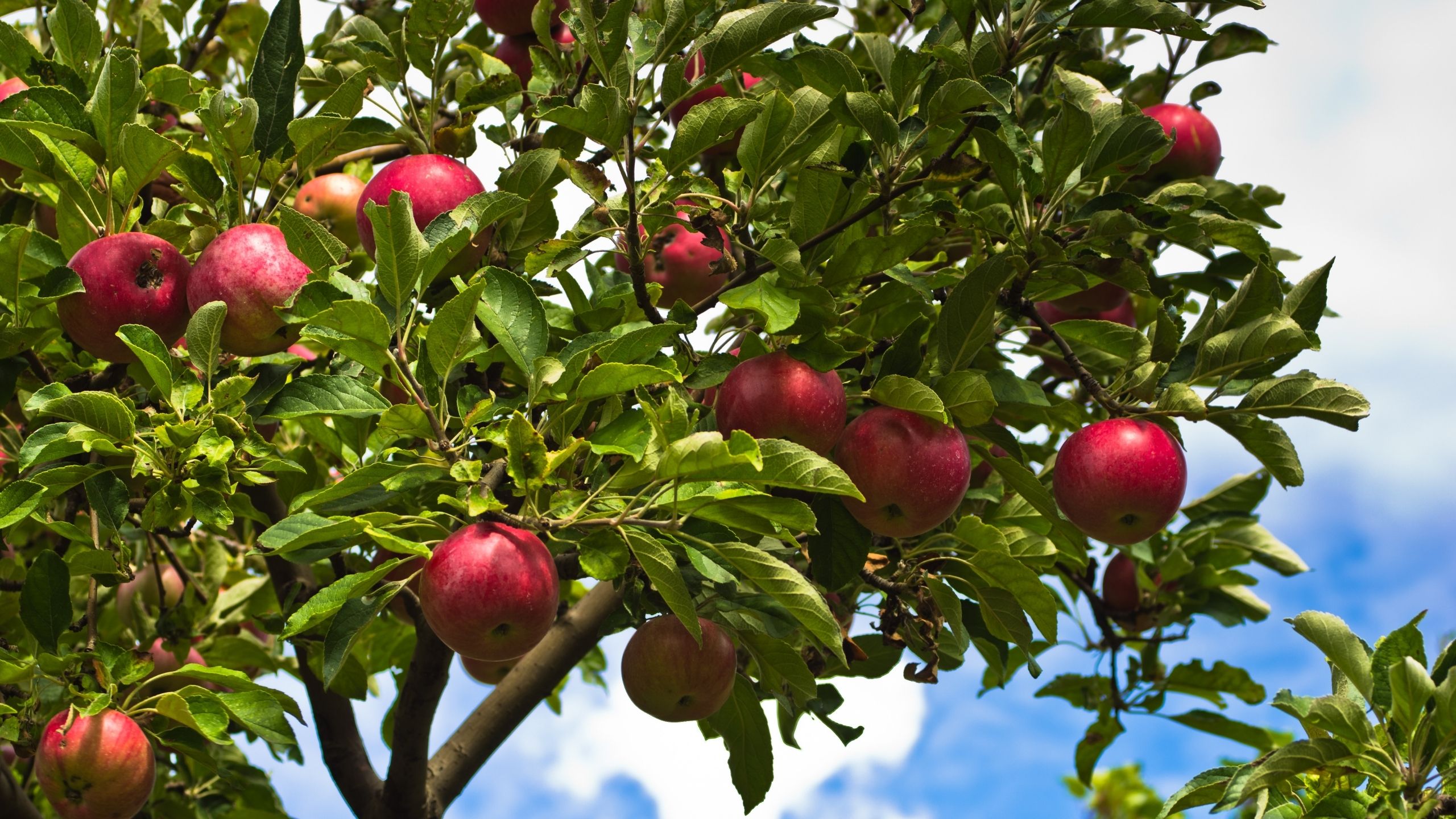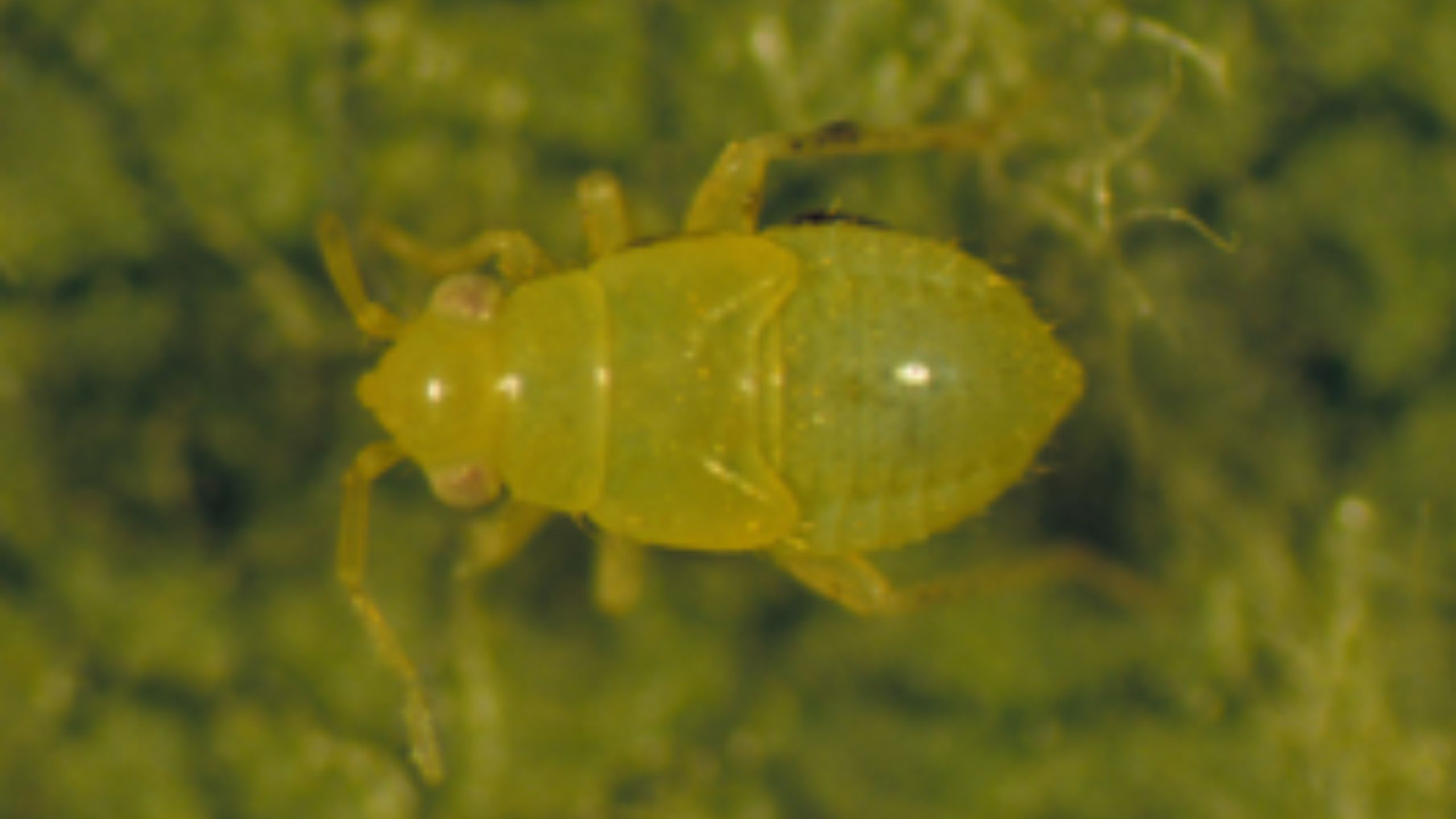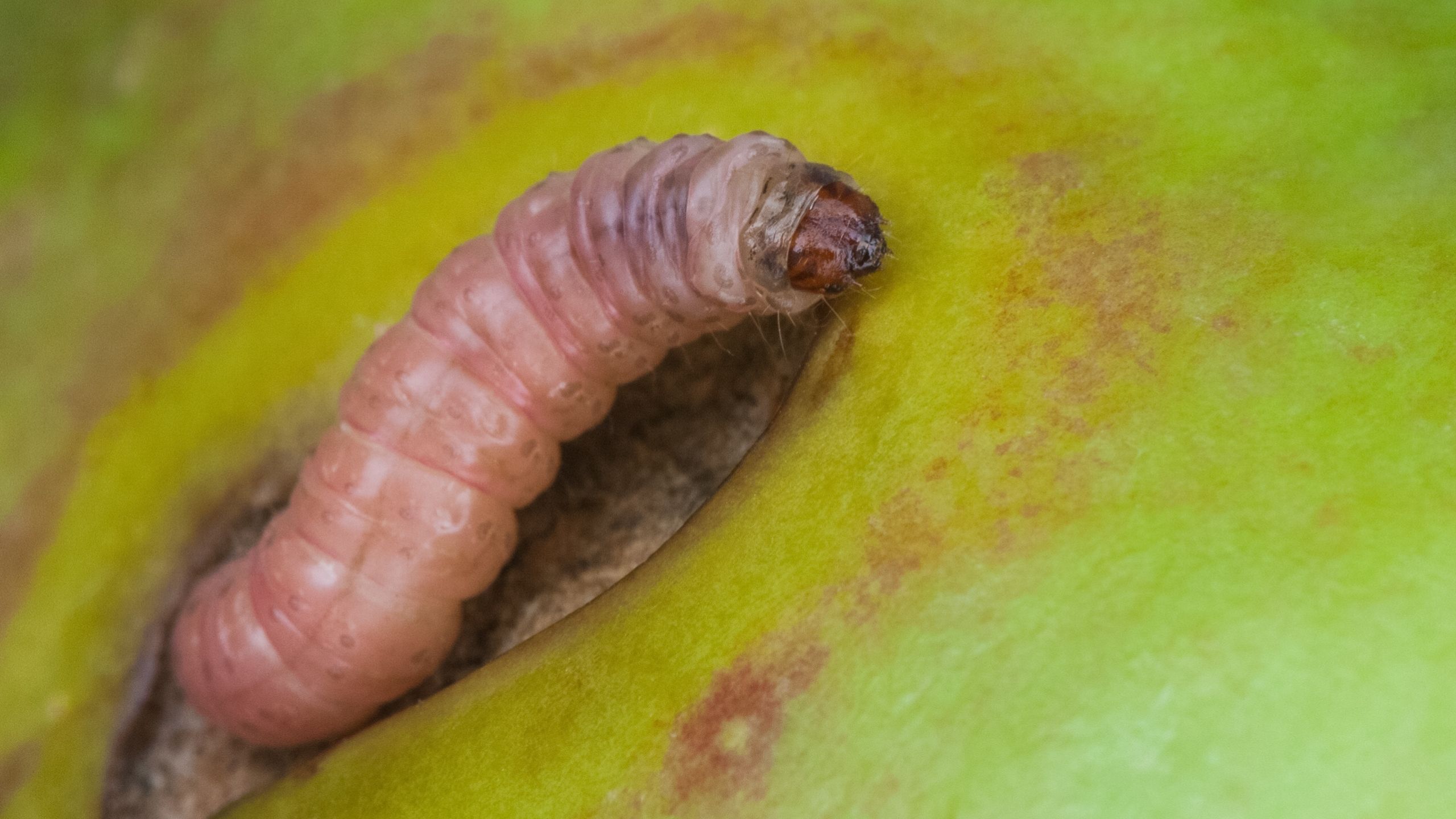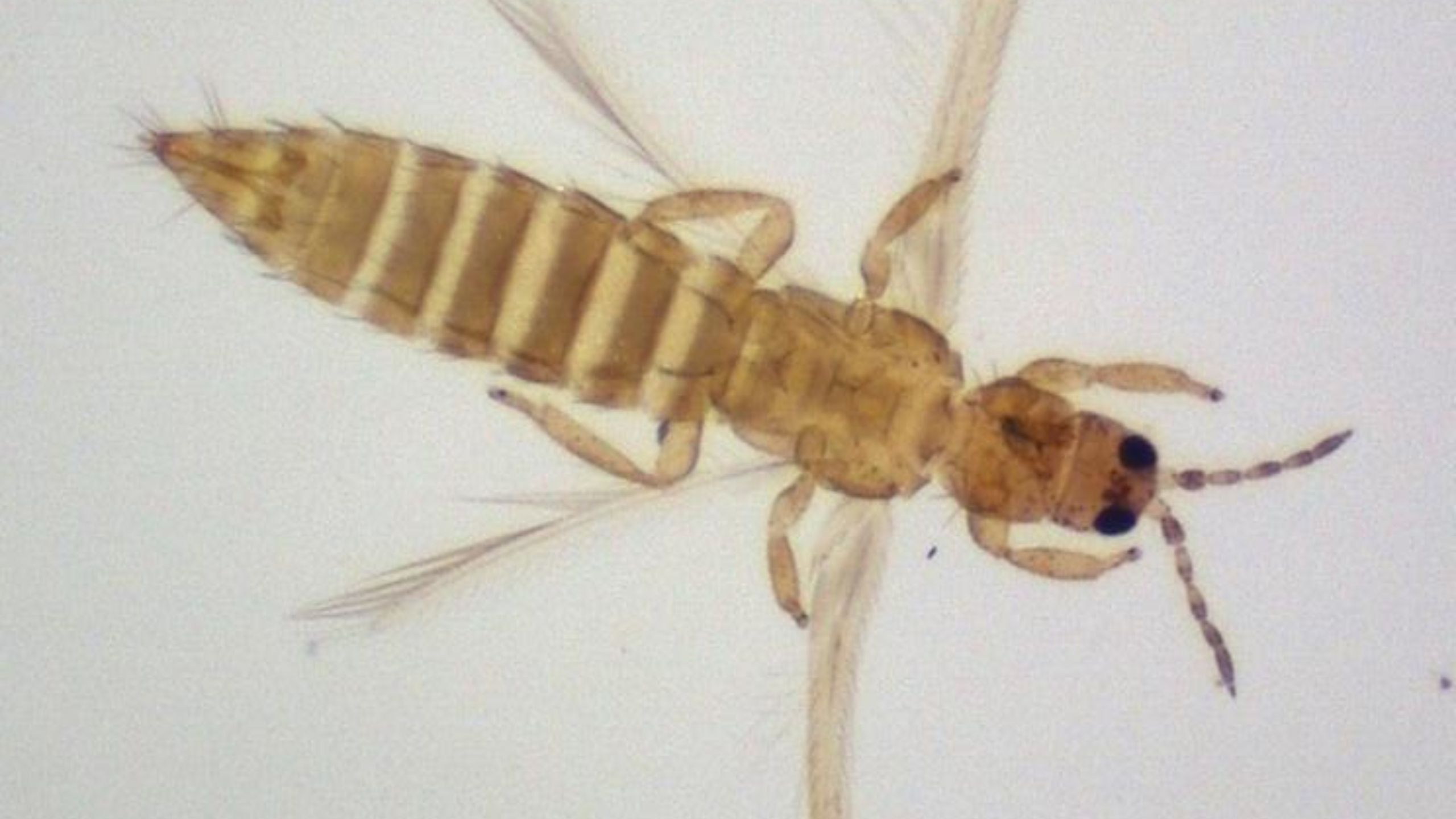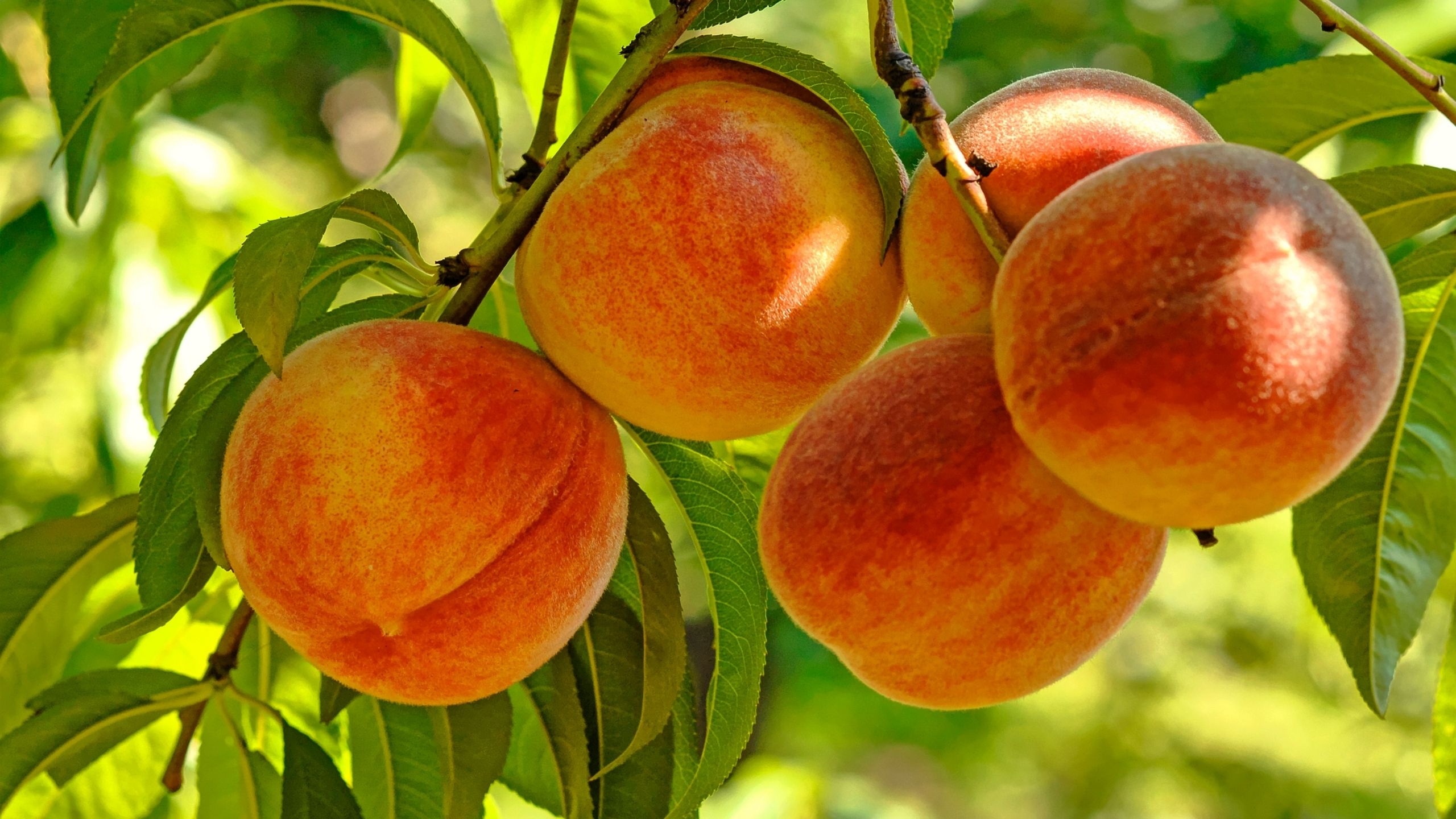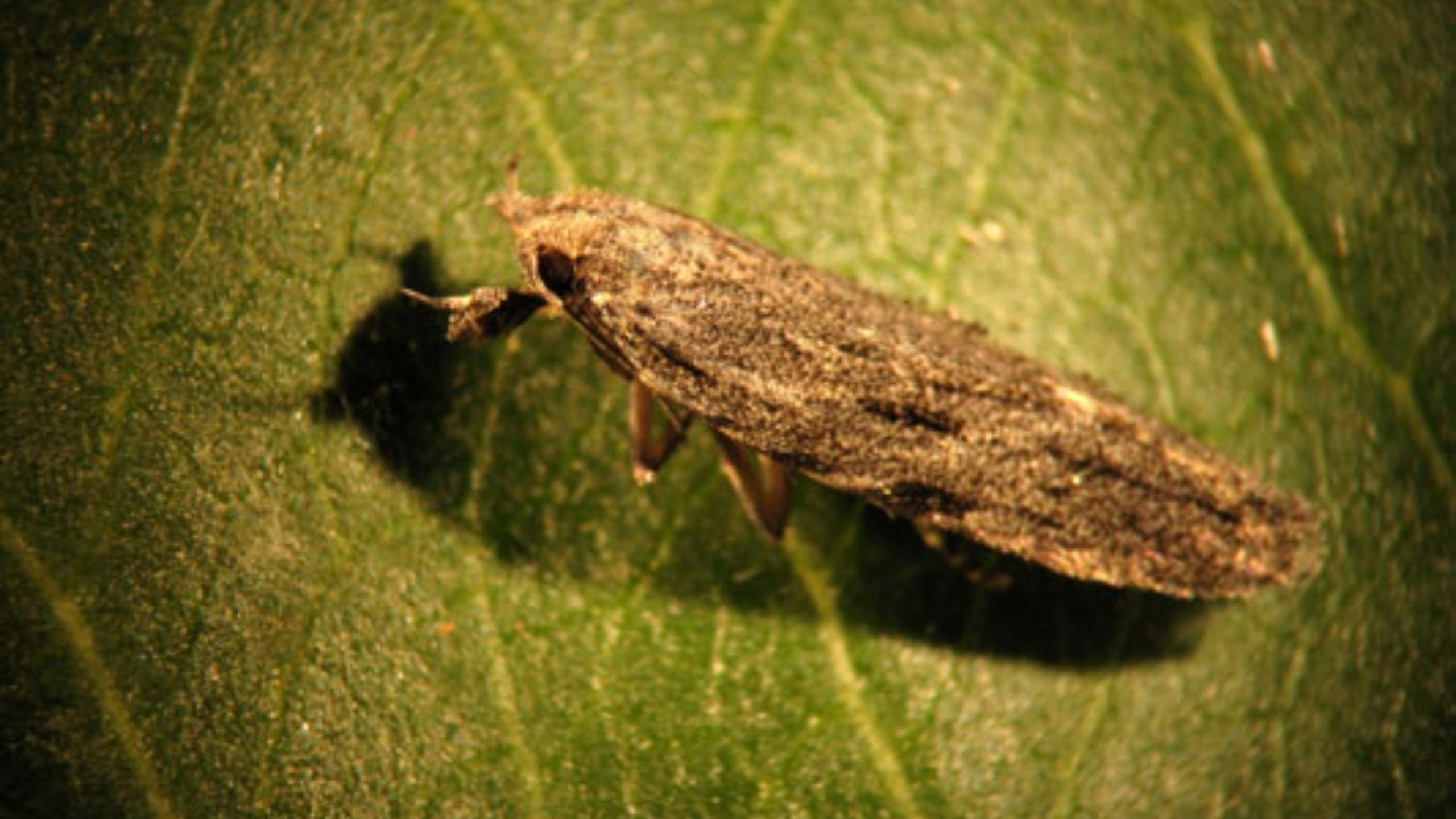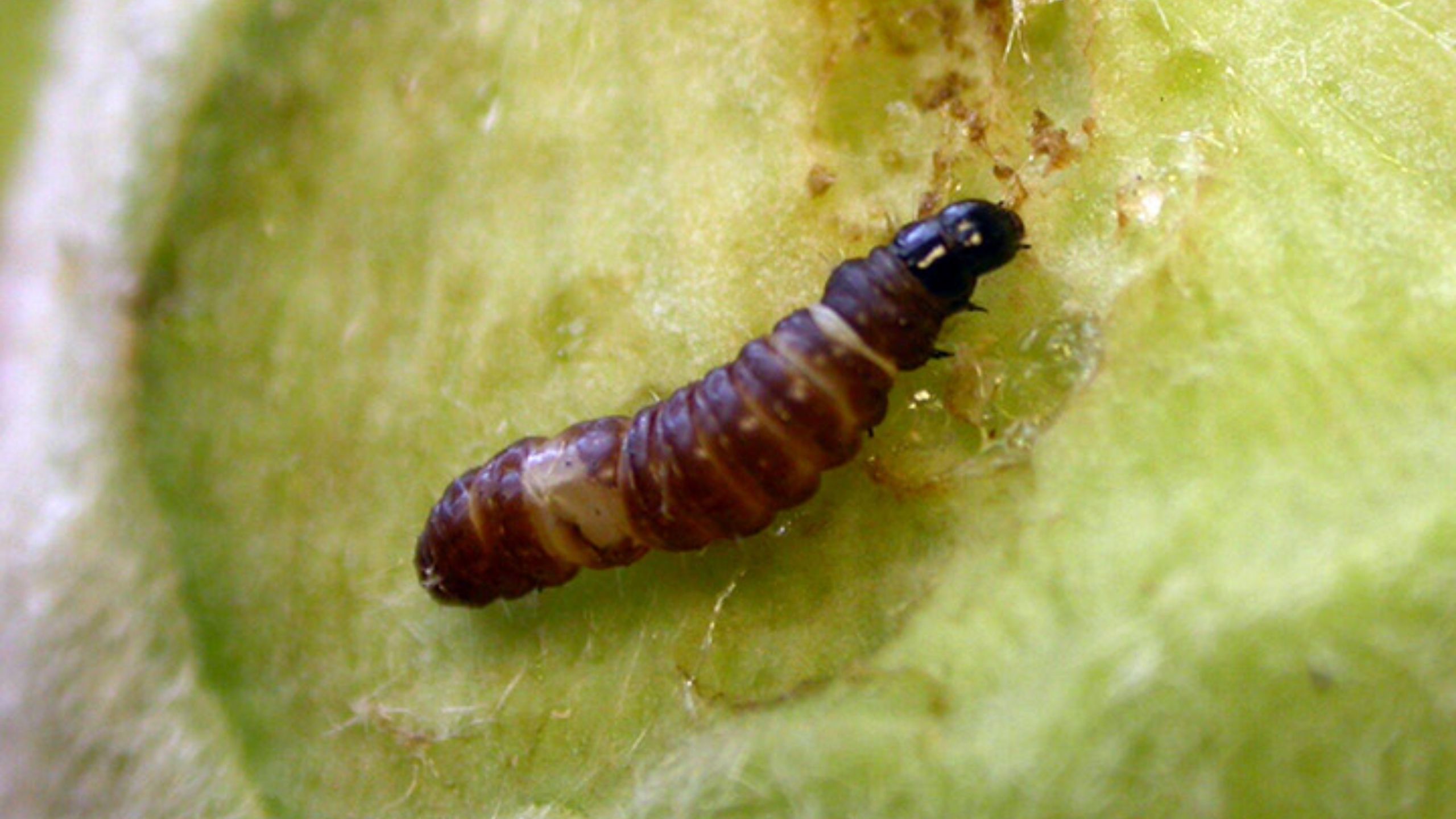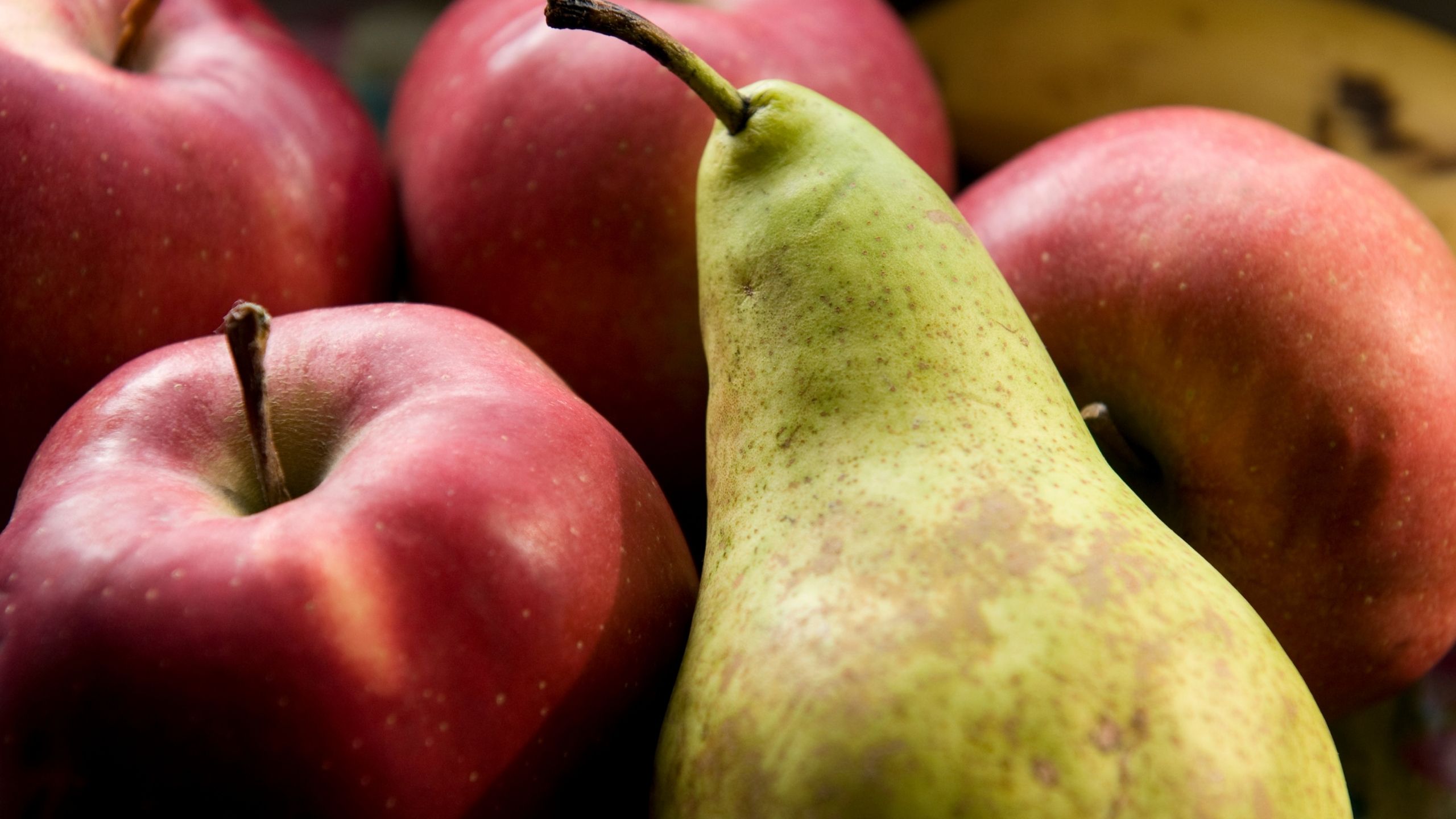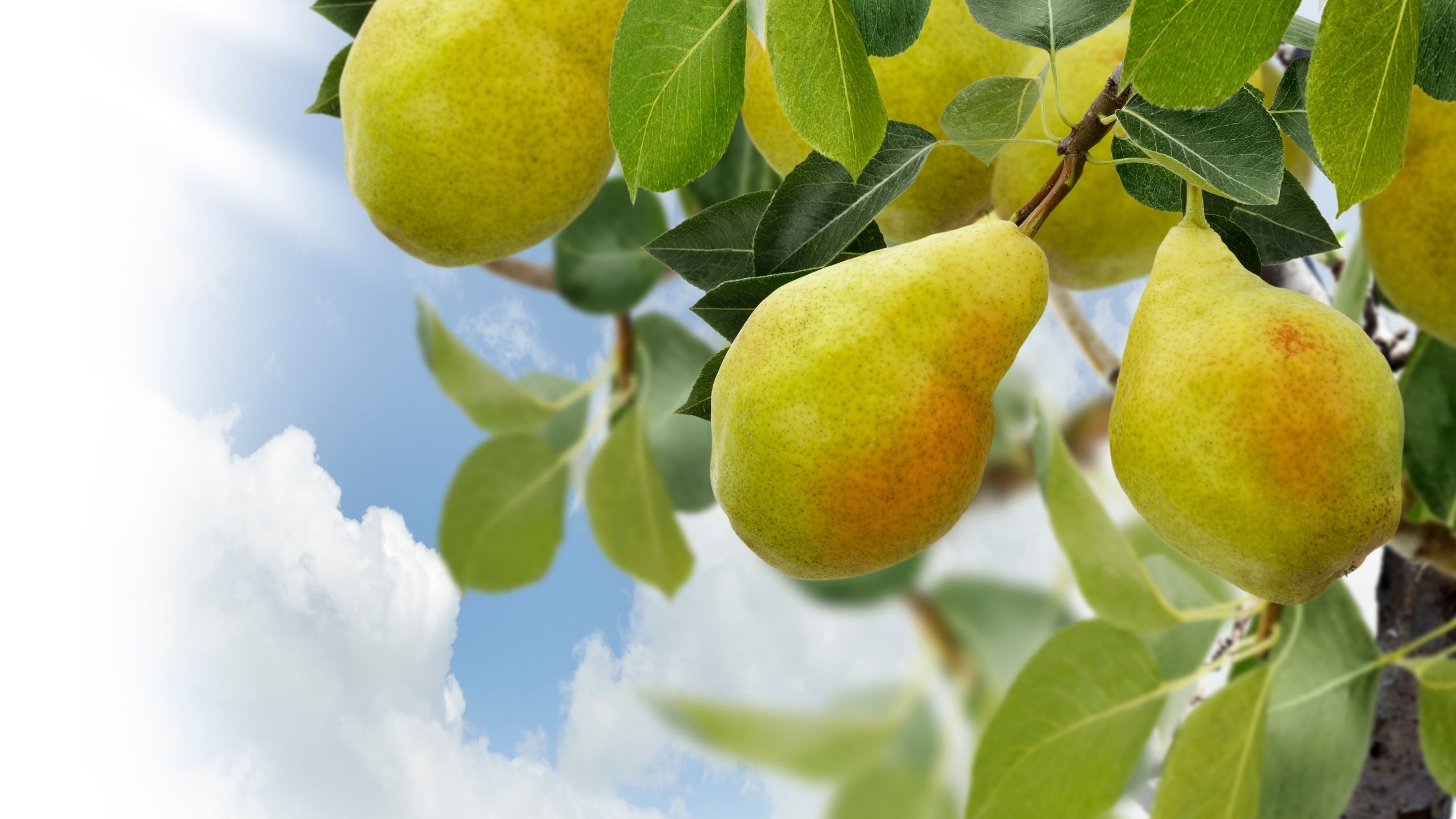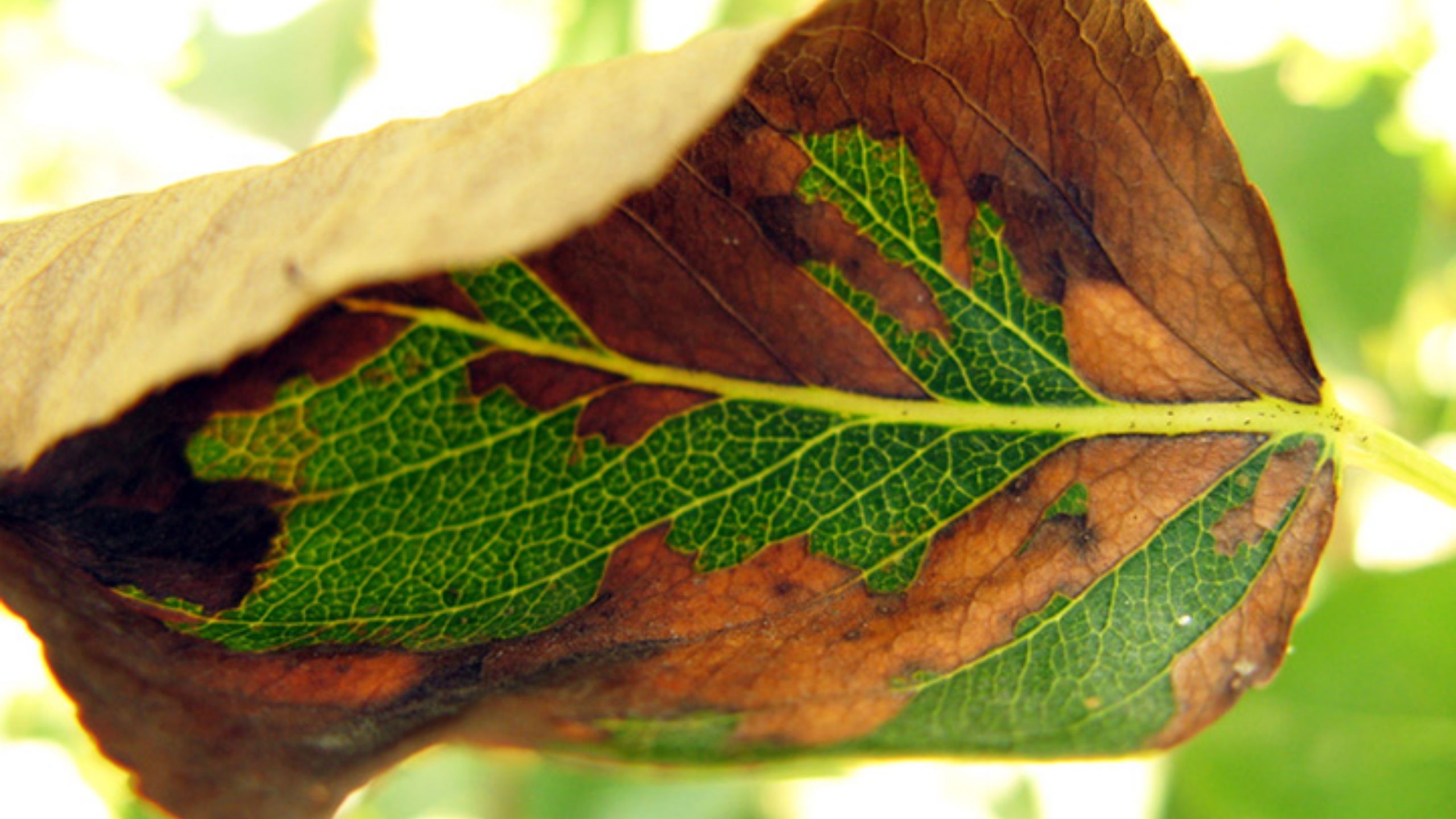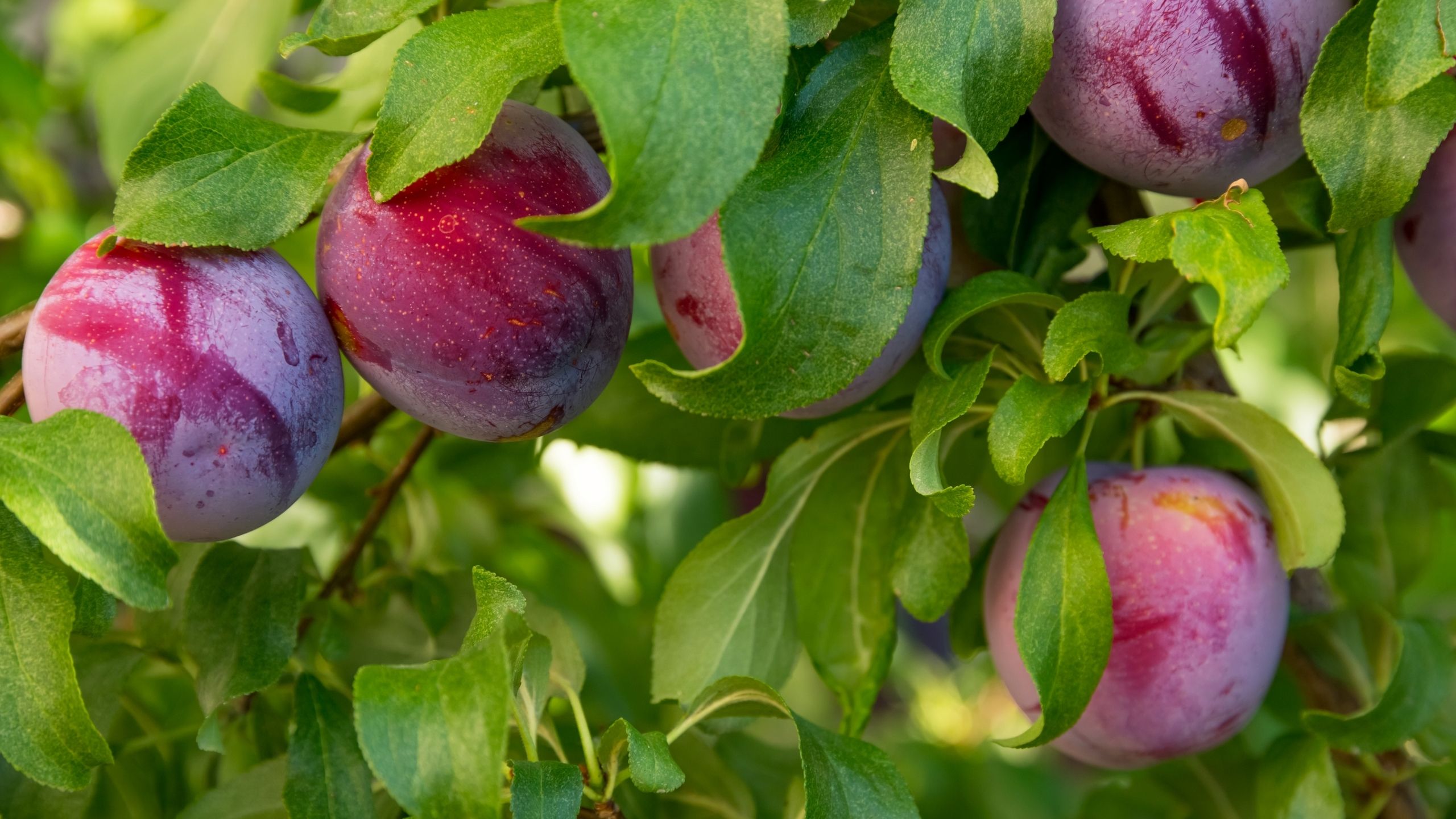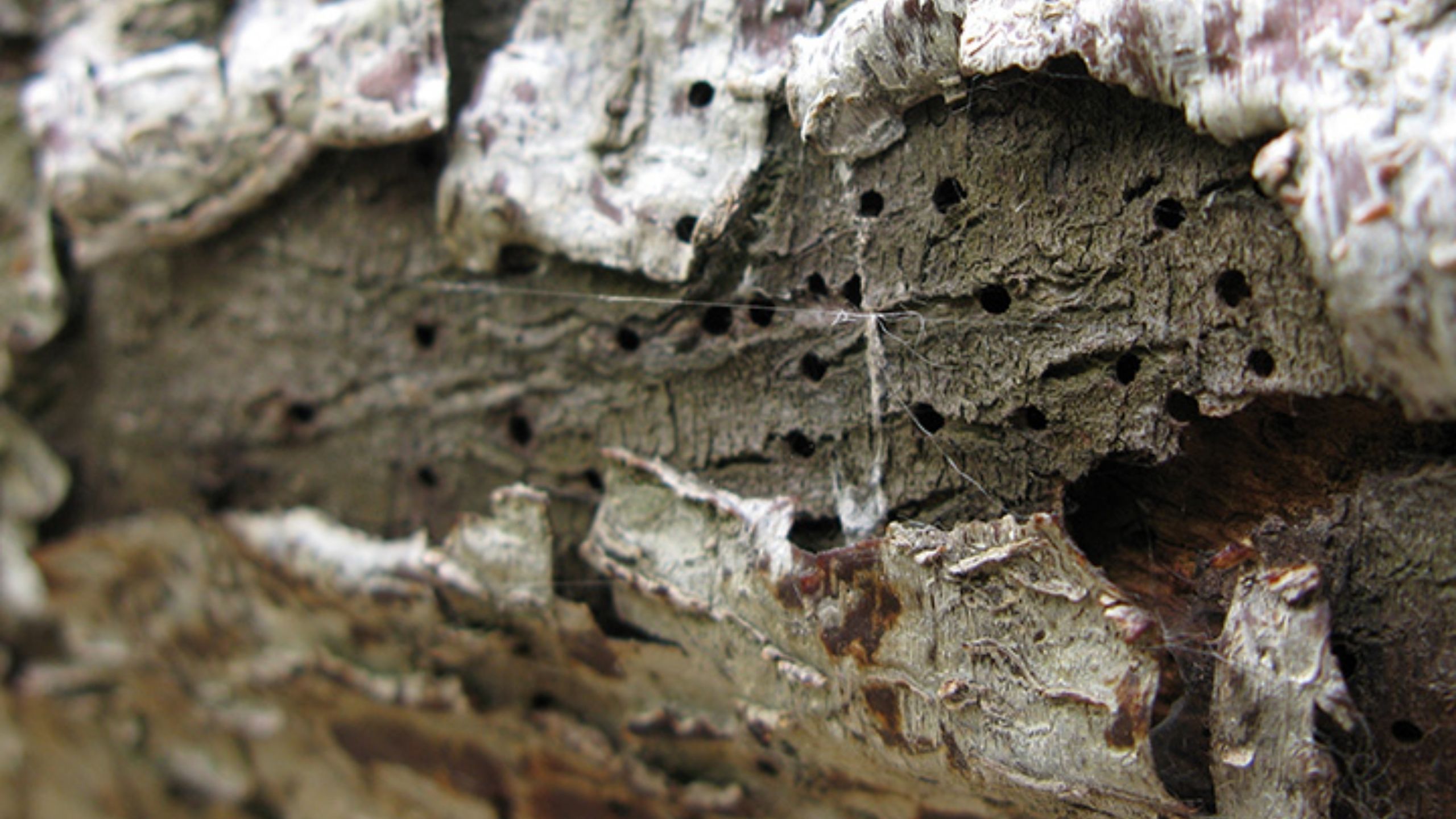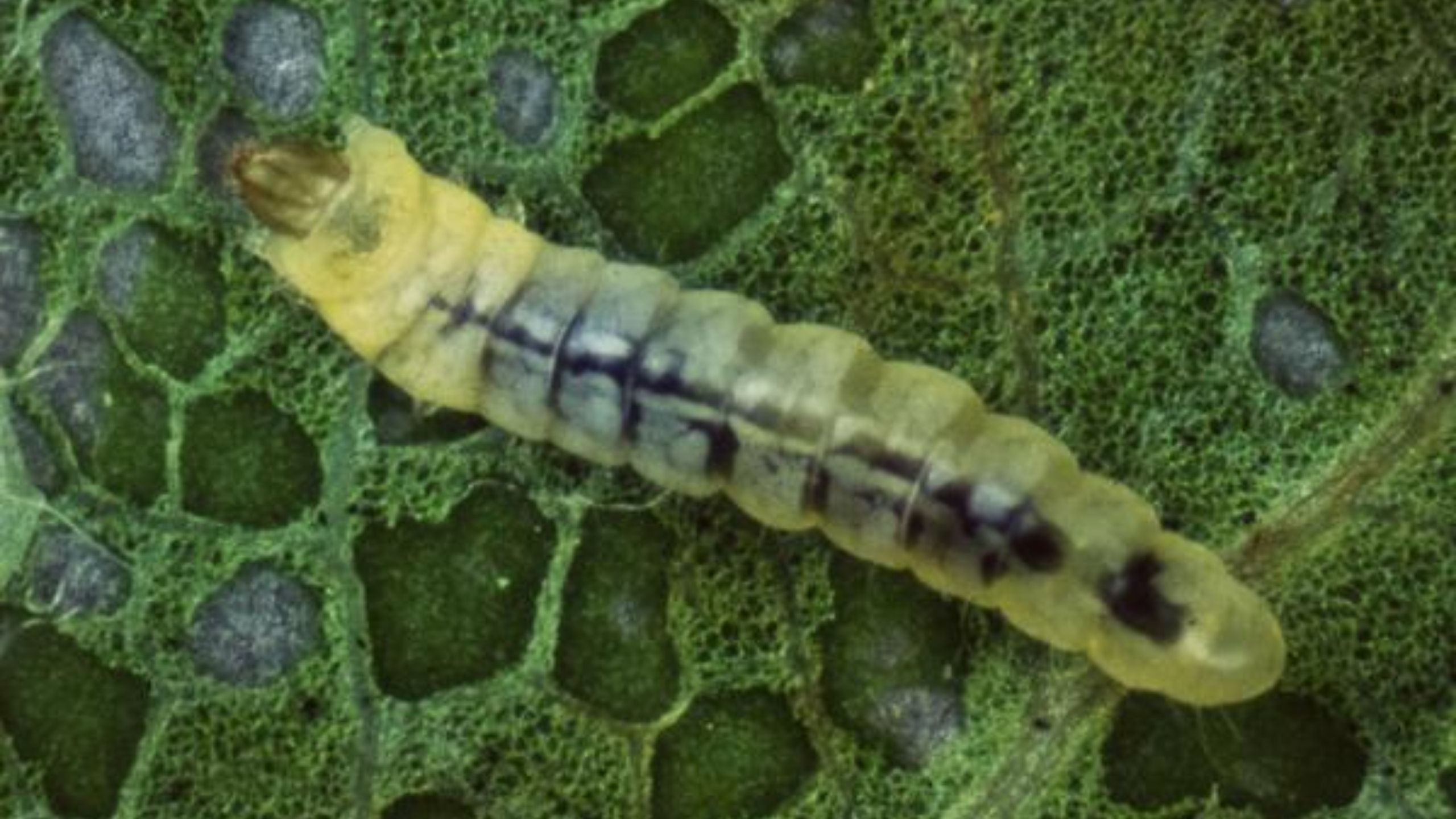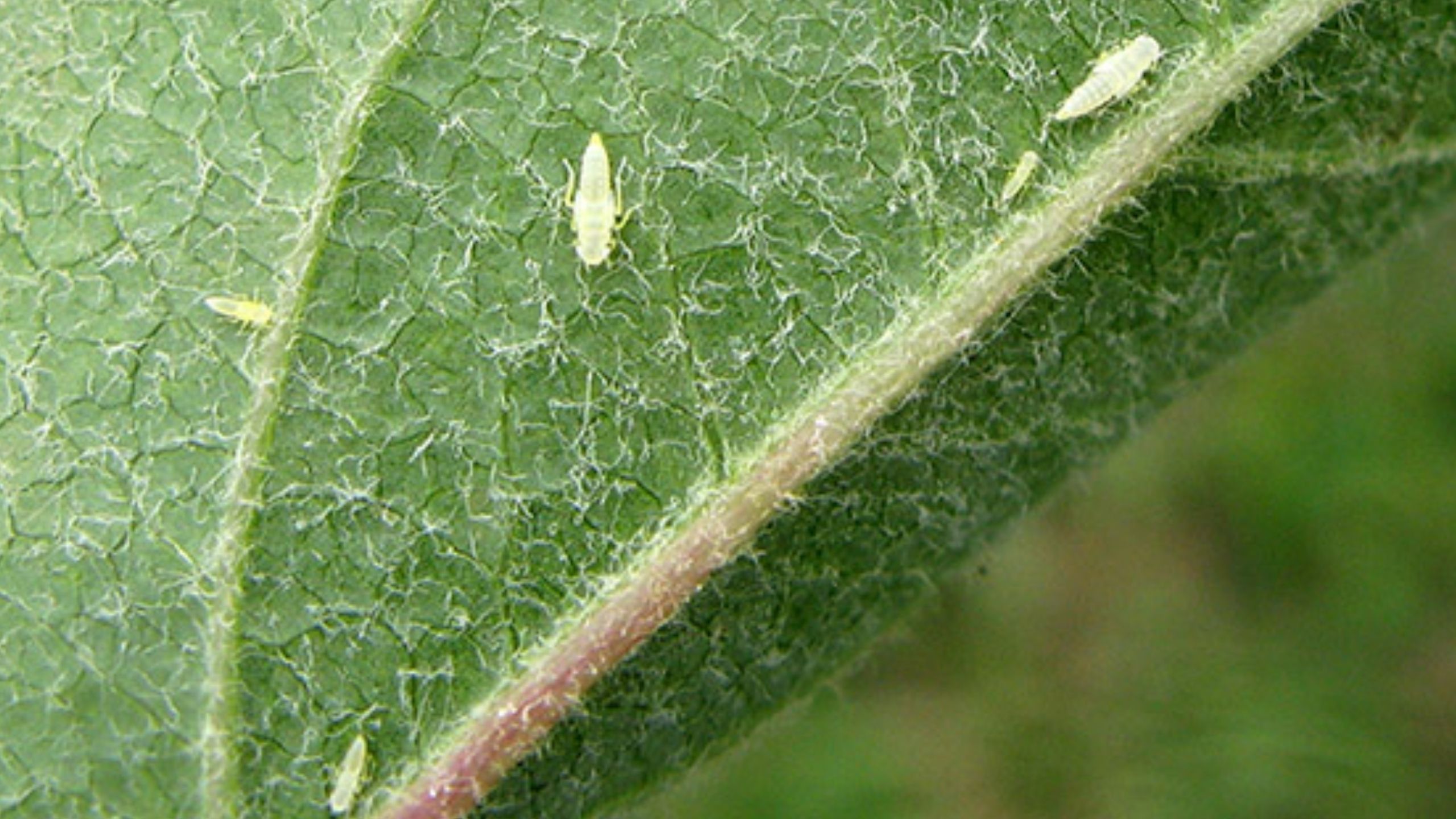Leafrollers in Fruit Orchards
August 2017
Diane Alston, Extension Entomologist (No longer at USU) • Marion Murray, Extension IPM Specialist
Do You Know?
- Leafrollers are a type of caterpillar that may roll or tie leaves together to form a protective shelter; they feed on the leaves and fruits of host plants.
- The leafroller group contains many economically important pests of fruits, vegetables, and ornamentals.
- A survey conducted in northern Utah found that the obliquebanded leafroller is the most common species in commercial fruit orchards. A non-native species, the European leafroller, was detected at very low levels.
- A temperature-based (degree day) model was modified for use in Utah to predict timing of the first and second generations of obliquebanded leafroller, and is available on the Utah TRAPs (Temperature Resource and Alerts for Pests) website.
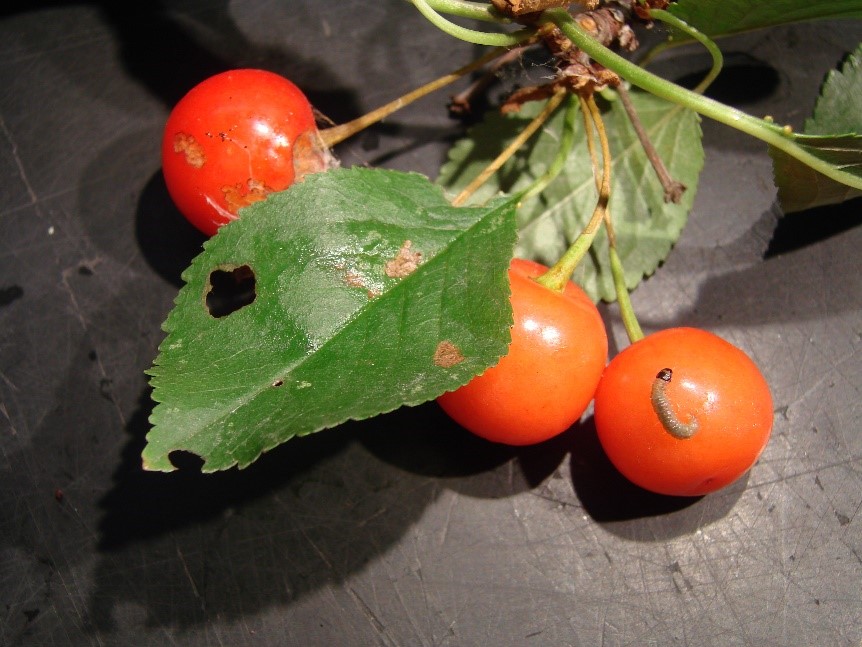
Several species of leafrollers are economically important pests of tree fruits in North America. In Utah, injury to tart cherry crops from leafroller caterpillars (Fig. 1) prompted a 4 year survey for five species that are known to occur in the western U.S. Pheromone traps were used to detect adult moths, and visual and beating tray sampling was used to search for caterpillars.
The survey determined the species of leafrollers present, types of orchards at greatest risk for infestation, leafroller phenology (timing of moth flight and caterpillar activity), and tested an existing temperature-based (degree-day) model to predict timing of leafroller management treatments.
Obliquebanded leafroller [Choristoneura rosaceana (Harris)] was the primary species caught in pheromone traps (Fig. 2), followed distantly by fruittree leafroller [Archips argyrospilus (Walker)] (Figs. 3 and 4). Very few of the non-native European leafroller [Archips rosanus (Linnaeus)] were detected. No pandemis [Pandemis pyrusana (Kearfott)] or omnivorous leafrollers [Platynota stultana (Walsingham)] were found (Fig. 4).
Descriptions and Biology
Obliquebanded Leafroller (OBLR)
OBLR can feed on a wide variety of tree fruits (e.g., apple, pear, cherry, peach, apricot, plum). In some years in Utah, OBLR has caused economic injury to the commercial tart cherry crop, as well as contaminated harvest bins.
The adult moth is ¾ to 1 inch long (19-25 mm) with tan and brown bands on the wings in a wavy pattern. The leading and trailing edges of the wing bands are darker in color (Fig. 2). The caterpillar (Fig. 5) is greenish-yellow with a brown to black head capsule. They are often found within rolled leaves, and will wriggle and drop on a silken thread when disturbed.
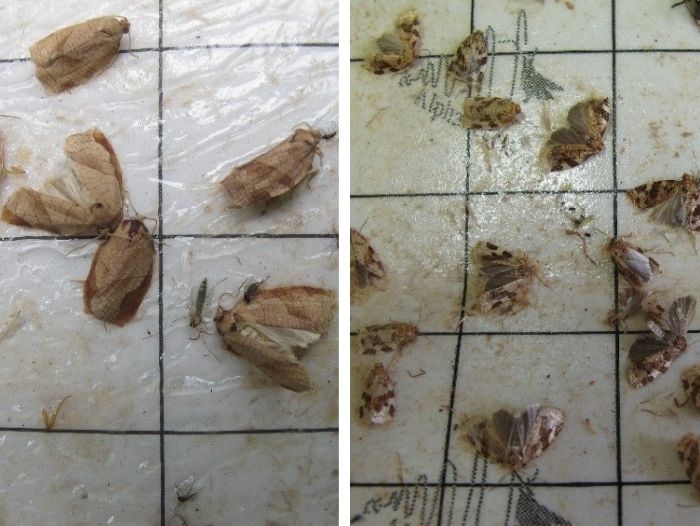
Helmut Riedl, Oregon State University, Hood River, OR.

OBLR spends the winter as a larva (caterpillar) inside a silken cocoon within bark crevices. Larvae emerge in spring during bud break. They feed on buds and expanding leaves and flowers, and complete development by late May to early June. They pupate within the silken shelter of folded leaves, and emerge as adult moths June through July. Females lay clusters of eggs on leaves (Fig. 6). A summer generation of larvae hatch and feed on leaves and fruits (especially clustered fruits) during July and early August. It is this summer generation of larvae that has damaged the tart cherry crop in Utah. A second flight of adult moths occurs in August and September, before more eggs are laid that hatch into the overwintering larvae. In some areas of the country, these larvae cause economic injury to ripening apples. Two generations of OBLR occur in northern Utah.
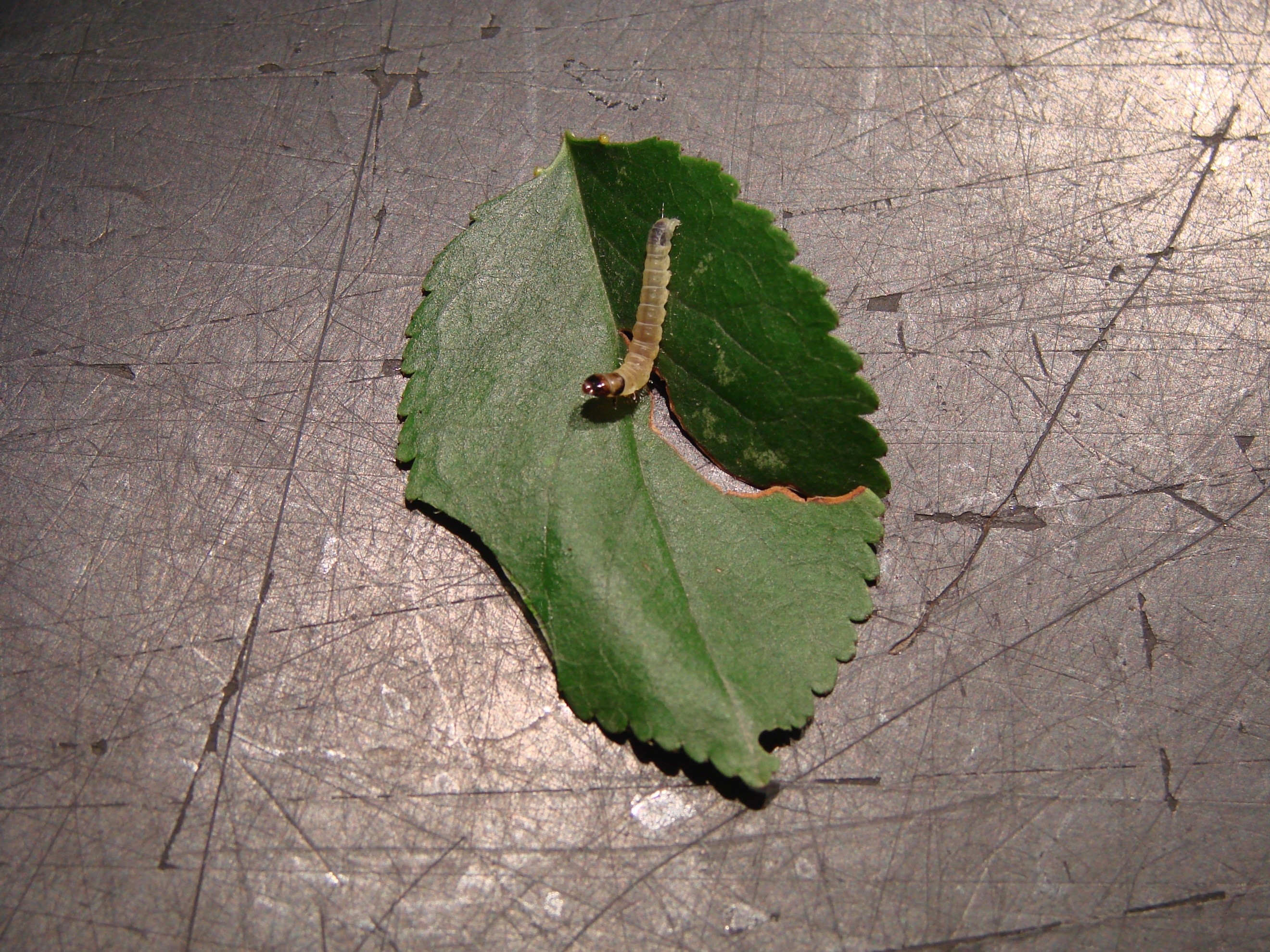
Fruittree Leafroller (FTLR) and European Leafroller (ELR)
In contrast to OBLR, FTLR and ELR have only one generation per year and overwinter as egg clusters laid on tree bark (Fig. 7). Eggs begin hatching at bud break, and larvae feed on leaves and fruit from May to early June. Adult moths fly during June and July. In late summer, females lay irregular masses of eggs in bark crevices that will then hatch the following spring.
FTLR moths look quite different from OBLR. They are slightly smaller, at ½ to ¾ inch long (13-19 mm). They are tan and rusty brown with a mottled wing color pattern and triangular spots on the outside edges of the wing (Fig. 3). ELR is similar in size to FTLR, but darker brown with a distinct dark band that runs diagonally across the wing (Fig. 8).

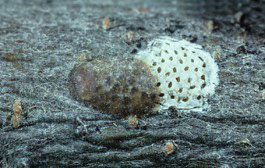
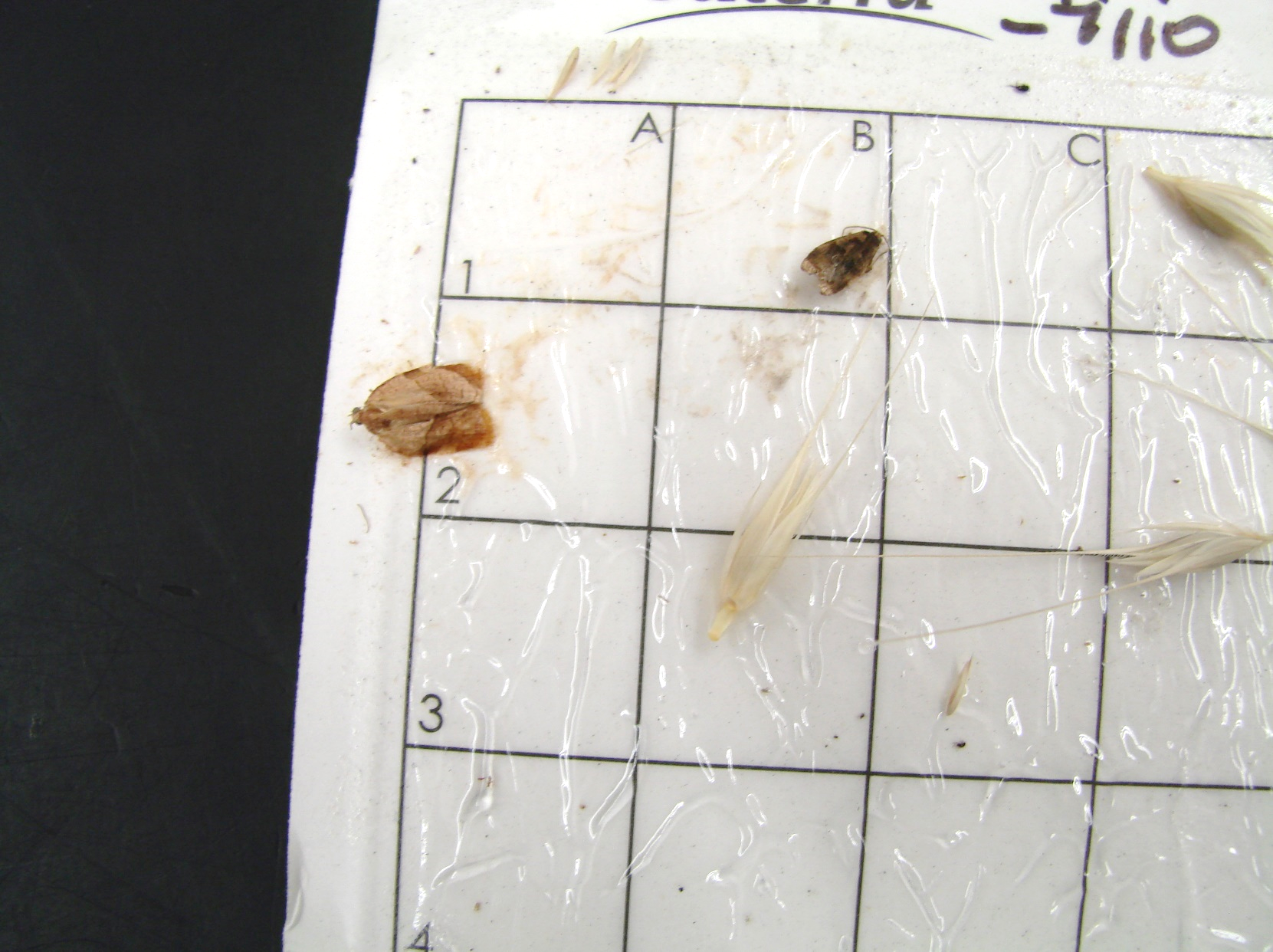
Crop Injury
In the spring, leafroller larvae feed primarily on buds and leaves. Silken webbing and rolled leaves and stems are the most obvious signs of their presence at this time. As fruit develops, larvae of the overwintering generation can feed on young fruit causing deformity and scars (Fig. 9). In July and August, larvae will feed on cherry (Fig. 1), apple (Fig. 10), and other host fruits, causing tunnels and holes in the fruit skin and outer flesh.
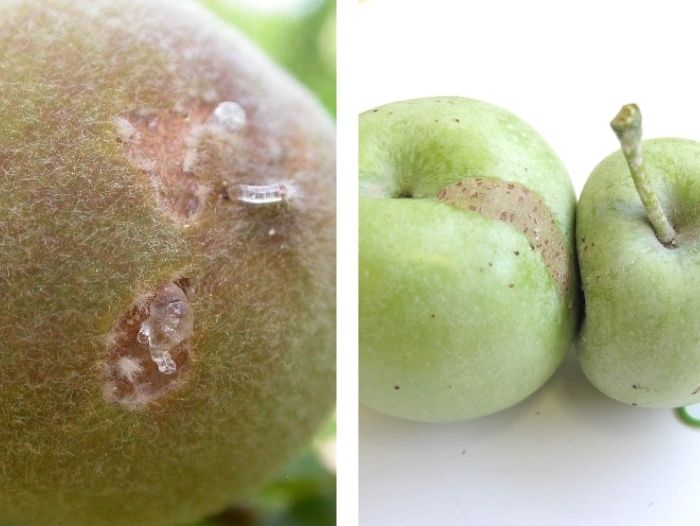

Orchard Preferences
In the Utah survey, the majority of OBLR was caught in commercial orchards that are managed with annual pruning and insecticide treatments (Fig. 11). The bulk of commercial orchards included in the survey were in southern Utah County (Payson, Santaquin and Genola). In contrast, the majority of FTLR was caught in orchards that have less intensive management or were unmanaged. Most unmanaged orchards in the survey were located in Davis, Weber, and Box Elder counties.
Orchard crops in the survey included apple, sweet cherry, and tart cherry. OBLR abundance was similar across crop types. FTLR was detected in apple and sweet cherry, but not in tart cherry.
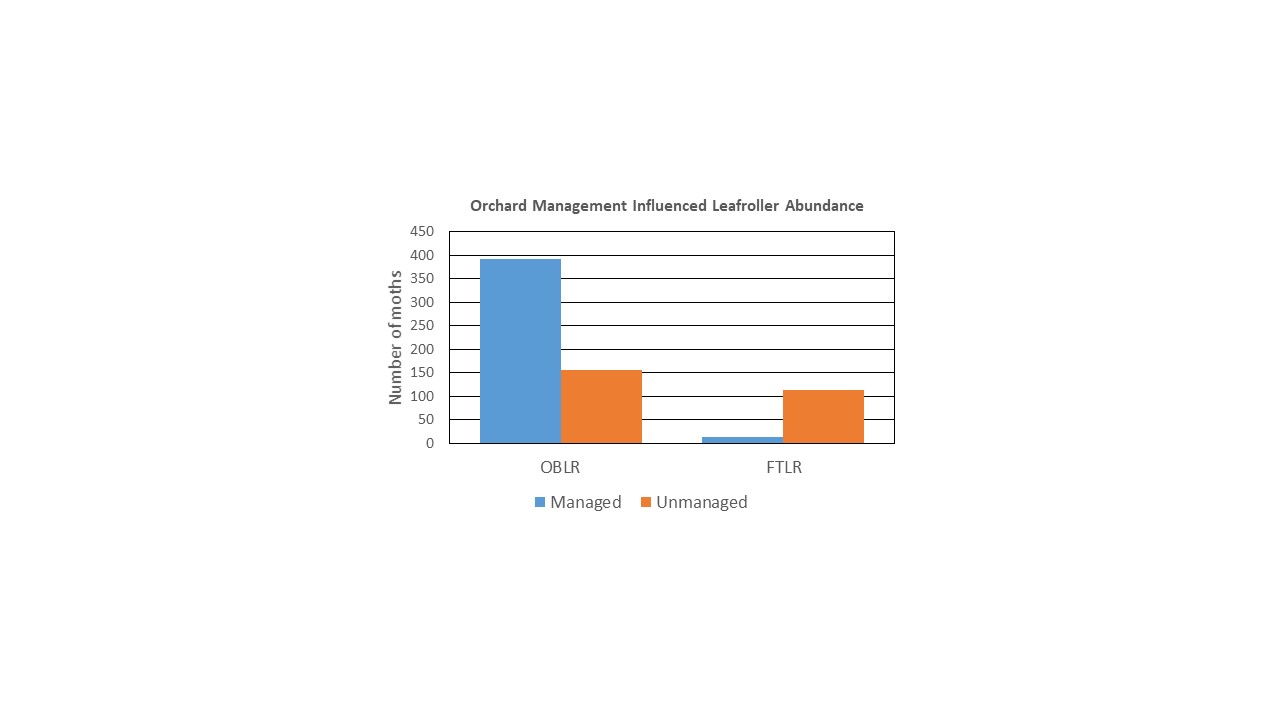
Monitoring
Methods
In orchards where OBLR has caused feeding injury to young fruits, such as apple, it is important to conduct regular inspections of new shoots for rolled leaves and feeding damage early in the season. Once leaf-feeding is detected, use beating trays to dislodge larvae (Fig. 12) and make visual observations.
In orchards where leafroller feeding injury occurs later in the season, such as tart cherry, the use of pheromone traps is the primary monitoring strategy. Hang a large Delta trap baited with a species-specific pheromone lure and check it weekly (Fig. 13).
In years 2014-15 of the Utah survey, 54% of the 1,407 OBLR moths were caught in traps with the OBLR-specific lure while the remaining 46% were caught with the ELR lure (Fig. 14). The two pheromone lures share common chemical compounds. If both OBLR and ELR monitoring is desired, traps with ELR lures could be used exclusively to save cost and labor.
The survey also compared the standard OBLR lure (a three-component chemical blend) to a lure formulated for western OBLR populations (a four-component blend; OBLR-W, Trécé Inc., Adair, OK). The total number of OBLR moths caught was similar; however, the western lure was slightly more attractive to the 1st OBLR generation in June, whereas the standard lure was more effective during the 2nd generation in August and early September (OBLR lure types were compared in only one year of the survey).
Although high numbers of leafroller moths can be caught in pheromone traps, trap capture is an unreliable indicator of potential crop damage. Capture of less than 25 moths per week usually indicates sub-economic population levels, but not always.

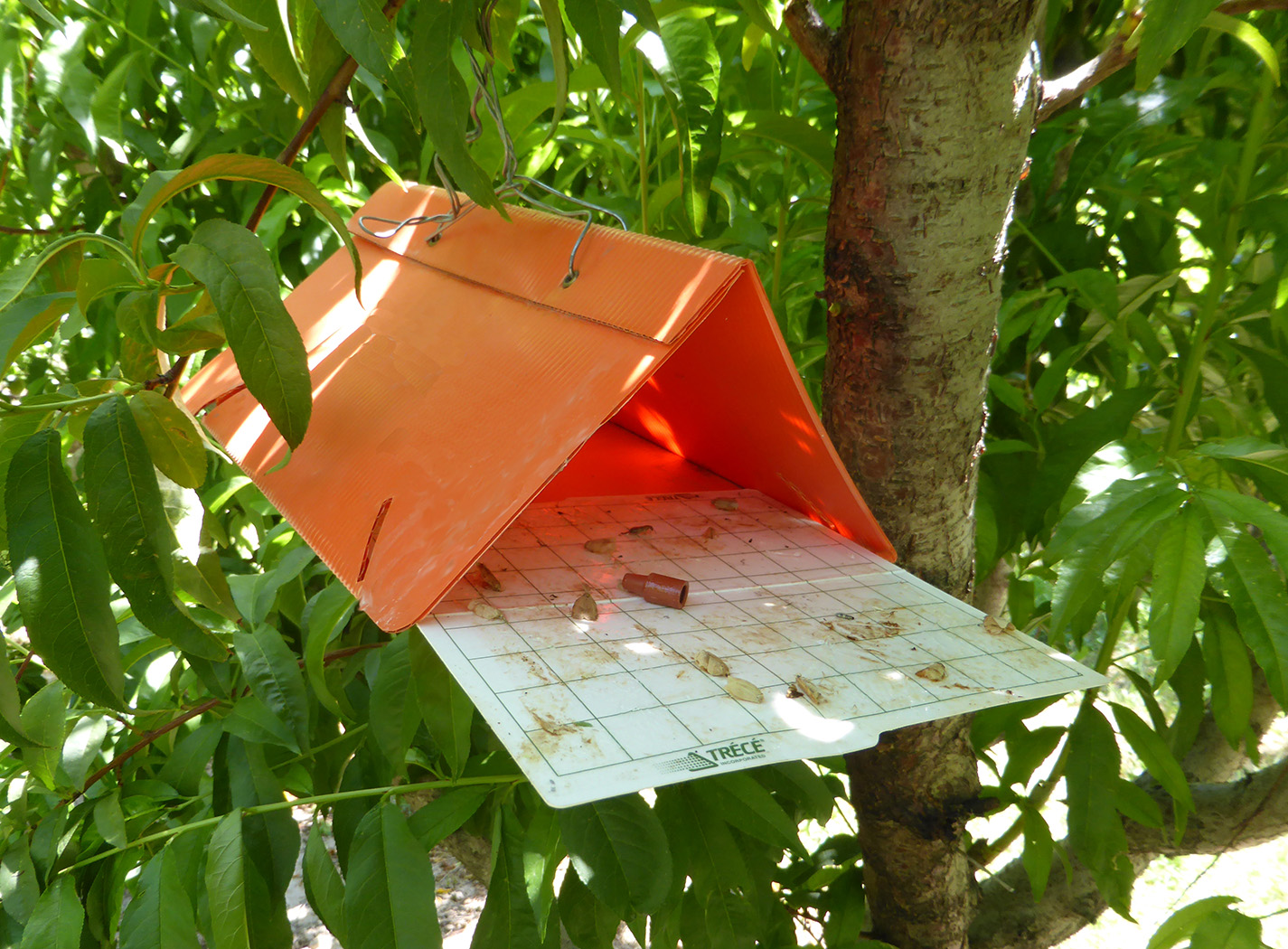
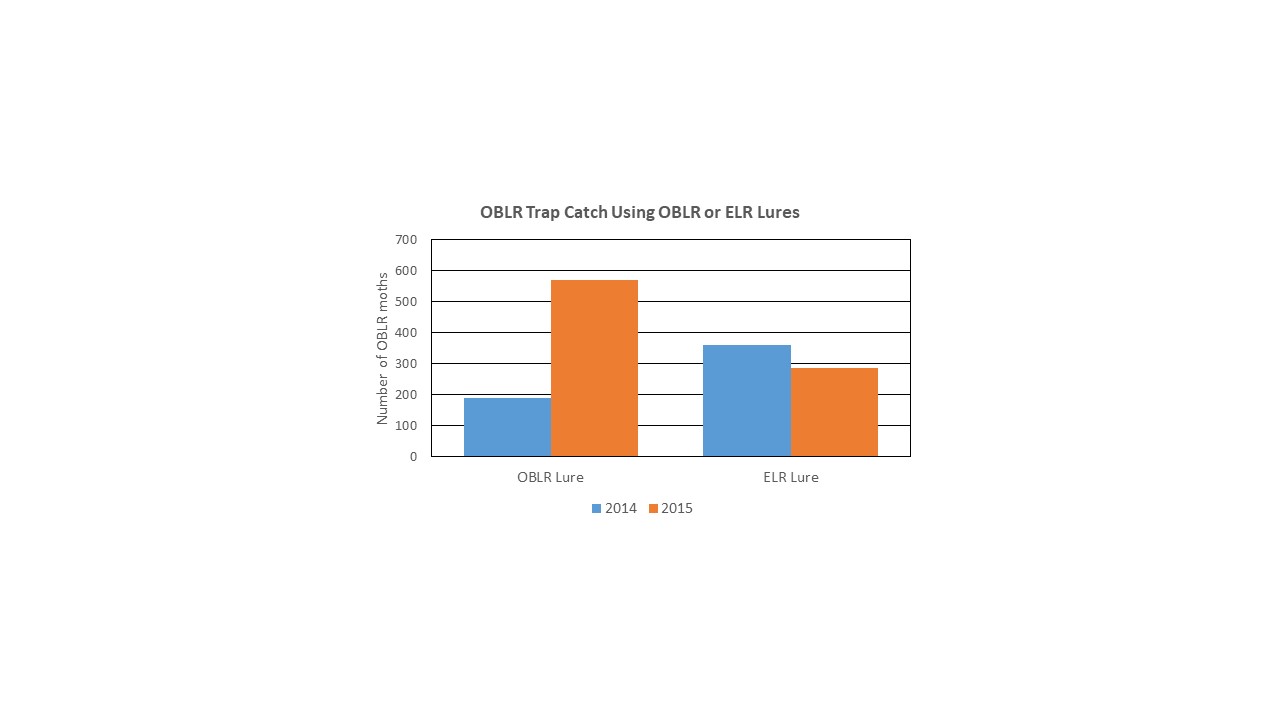
Treatment Timing
Degree-day Model to Predict Activity Timing
OBLR moth flight was compared to a predictive model developed for Washington state (Brunner and Lampson, 1997). Moth emergence of the 1st generation matched the model, but the 2nd generation of moths emerged an average of 300 degree-days (DD) earlier than predicted. The model uses first trap catch as biofix to predict first and second generation larvae, and lower and upper temperature thresholds of 43°F and 85°F, respectively. It is available on the Utah TRAPs website. For Utah, the model remains unchanged from the Washington version for the first generation. Emergence timings for the second generation were shifted earlier by 300 DD (Table 1).
Table 1. Obliauebanded leafroller degree-day model and predicted activity timing for first and second generations, modified for northern Utah from the model developed by Brunner and Lampson, 1997.
| Degree Days | Action |
|---|---|
| 600 - 700* | Hang pheromone trap in orchard |
| 1025 - 1175* | First moths of the 1st summer generation expected |
| 0 (reset to zero) | Set biofix at first catch |
| 440 | Egg hatch of 1st generation begins (1%) |
| 920 | End of 1st generation egg hatch |
| 1110 | 2nd generation moth flight begins (modified for Utah) |
| 1590 | 2nd generation egg hatch begins; apply treatment now if necessary |
| 2360 | Egg hatch of 2nd generation ends |
*Cumulative DD since March 1
Management
Chemical Control
The fruittree (FTLR) and European leafrollers (ELR) are usually controlled by delayed-dormant or pre-bloom insecticides applied for other insect pests. Neither the FTLR nor ELR have caused serious economic damage in Utah orchards. As mentioned, FTLR is more common in low intensity and unmanaged orchards which receive fewer insecticides.
In northern Utah, obliquebanded leafroller (OBLR) is primarily a concern as a contaminant during tart cherry harvest. To prevent fruit damage and contamination in harvest tanks, apply an insecticide at the beginning of egg hatch (400-450 DD). Repeat at the beginning of 2nd generation hatch (1590 DD) only if trap capture is high (> 25 moths per week), or in locations that had previous injury.
Effective insecticides include:
- chlorantraniliprole (Altacor), cyantraniliprole (Exirel), spinetoram (Delegate WG), spinosad (Success or EntrustO), Bacillus thuringiensis (Dipel DFO, JavelinO), methoxyfenozide (Intrepid 2F), carbaryl (Sevin 4F), and malathion (Malathion 5EC)
- For a complete list of insecticide options, refer to the Intermountain Tree Fruit Production Guide.
In apple and other crops where OBLR may cause early (Fig. 9) to late-season (Fig. 10) fruit injury (e.g., pear, plum, peach, sweet cherry), there are several key timings during the season to control OBLR:
- To suppress overwintering larvae in the spring, at the half-inch green stage of apple flower bud development, apply 2% superior-type oil plus one of the following:
-chlorpyrifos (Lorsban 4E) or pyriproxyfen (Esteem 35WP) - At the pre-pink to petal fall stages of apple bud development, apply either:
-Bacillus thuringiensis (Dipel DFO, JavelinO) two to three times beginning at pre-pink, and repeating at pink and petal fall; apply Bt only when temperatures exceed 60°F
-methoxyfenozide (Intrepid 2F), spinetoram (Delegate WG), or spinosad (Success or EntrustO) - At petal fall of apple development:
-In addition to options for pink to petal-fall above, apply chlorantraniliprole (Altacor), Chromobacterium subtsugae (GrandevoO), emamectin benzoate (Proclaim 5SG), novaluron (Rimon 0.83EC), or pyriproxifen (Esteem 35WP)
-For homeowner insecticide options and more details on commercial insecticide options, refer to the Pacific Northwest Pest Management Handbook.
Leafrollers can develop resistance rapidly when the same types of insecticides are used repeatedly. Alternate chemical modes of action between treatments. Refer to the fruit production guides referenced above for chemical group types identified by the Insecticide Resistance Action Committee (IRAC).
Cultural Control
In apple and other crops with early-season leafroller injury, thinning clusters to single fruits can reduce leafroller fruit-feeding. Hand-picking rolled leaves containing larvae and pupae can reduce populations, but is only practical for small-scale orchards.
Biological Control
Generalist predators, such as spiders and lacewings help suppress leafroller larval populations. There are several species of parasitic wasps and a parasitic fly that attack leafroller larvae internally; however, larvae of the wasp Colpoclypeus florus (Hymenoptera: Eulophidae) feeds externally on leafroller larvae (Fig. 15). Use of broadspectrum insecticides for codling moth, cherry fruit fly or other primary fruit pests will diminish the opportunity for biological control of leafrollers. Orchards using mating disruption and lower toxicity insecticides will likely find greater impact of natural enemies on suppressing leafrollers (Brunner, 1993).
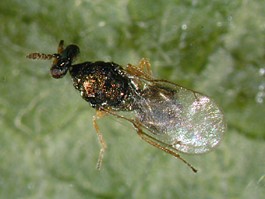
Related Research


